Hello everyone and welcome to my blog, or as they say in Swahili, Karibu!
I’m Noor Farjo, a junior biology major from West Springfield, MA. I’m so excited to share my journey of studying abroad in Tanzania with all of you; always feel free to comment and ask questions!
I’ve been looking forward to my semester abroad since I first attended Holy Cross! I can’t wait to start a journey full of adventures and unique learning experiences. This semester is going to be a time to expand my knowledge on African culture and wildlife, as well as meet people from different schools with different backgrounds than my own.
It’s been a long build up from applying to finally going to Tanzania and attending the School of Field Studies (SFS) program they offer. I applied for this program at the end of my fall semester sophomore year. The application process to study abroad was not difficult, however, I needed to decide my destination and how suitable the available courses would be for me and my major. So, I began my search! Even though I’m very happy and confident with my decision to study in Tanzania, I was not initially even looking into this program. This is mainly because I was not that familiar with it since it’s not the most popular program on campus, not surprisingly said. But, after discussing my options with the study abroad office, I became more familiar with all the amazing available opportunities that Holy Cross had partnerships with. After meeting with them, I felt much more prepared to make a decision that was most appropriate for me. I was open to go anywhere that was unique and would push me out of my comfort zone; SFS in Tanzania seemed like the perfect match for me! I would have never imagined that studying wildlife in Tanzania was ever possible and I am so happy to have found this opportunity before it was too late!
Leading up to my trip to Tanzania, I’ve had a busy summer in which I was a part of many new opportunities that came about through HC and it’s contacts. I started off my summer with the HC Paris Maymester program; I studied the art and history of one of the most iconic cities in the world. This month long summer program allowed me to explore the beauty of Paris as well as the French culture and most importantly food. After this amazing program, I worked, studied, and conducted research at Shoals Marine Laboratory at Appledore island for the remainder of my summer. Now, I’m ready for this next adventure to begin, I’ll keep you posted!
Here are some pictures from my summer experiences!
PARIS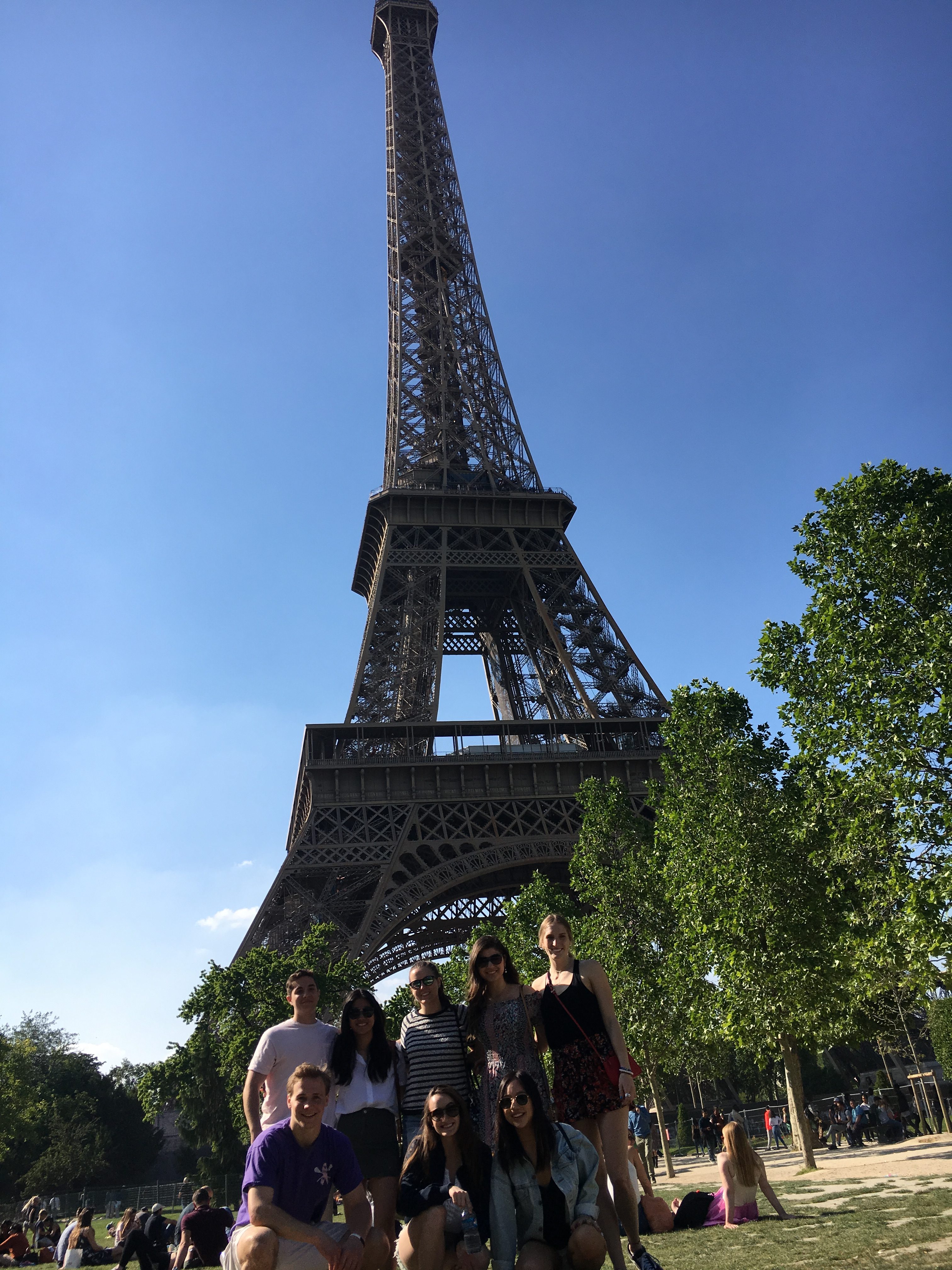
The Eiffel Tower photobombed so many of our pictures, can’t complain : )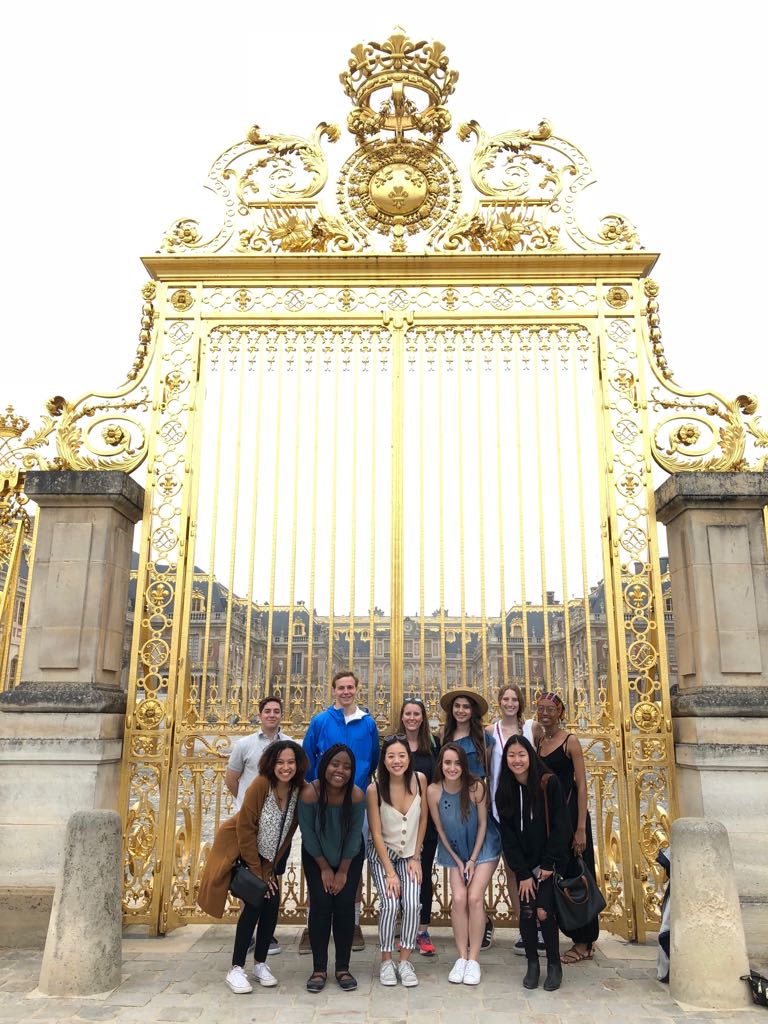
In front of the Palace of Versailles
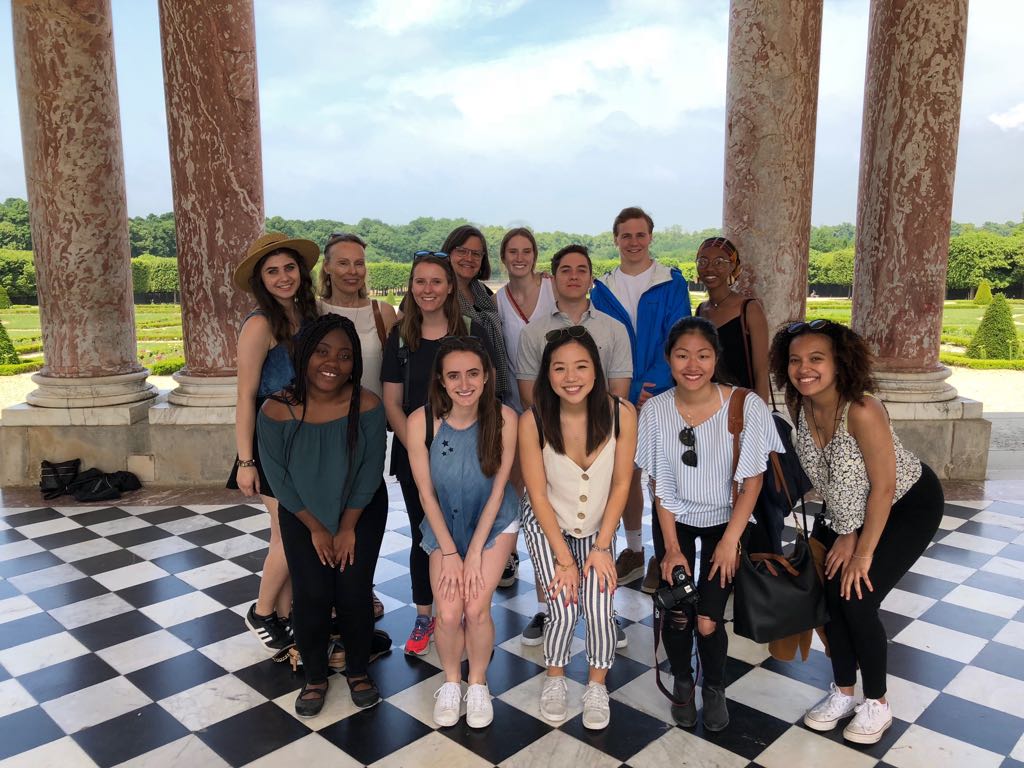
My classmates and professors touring the Petite Chateau of Marie Antoinette
SHOALS
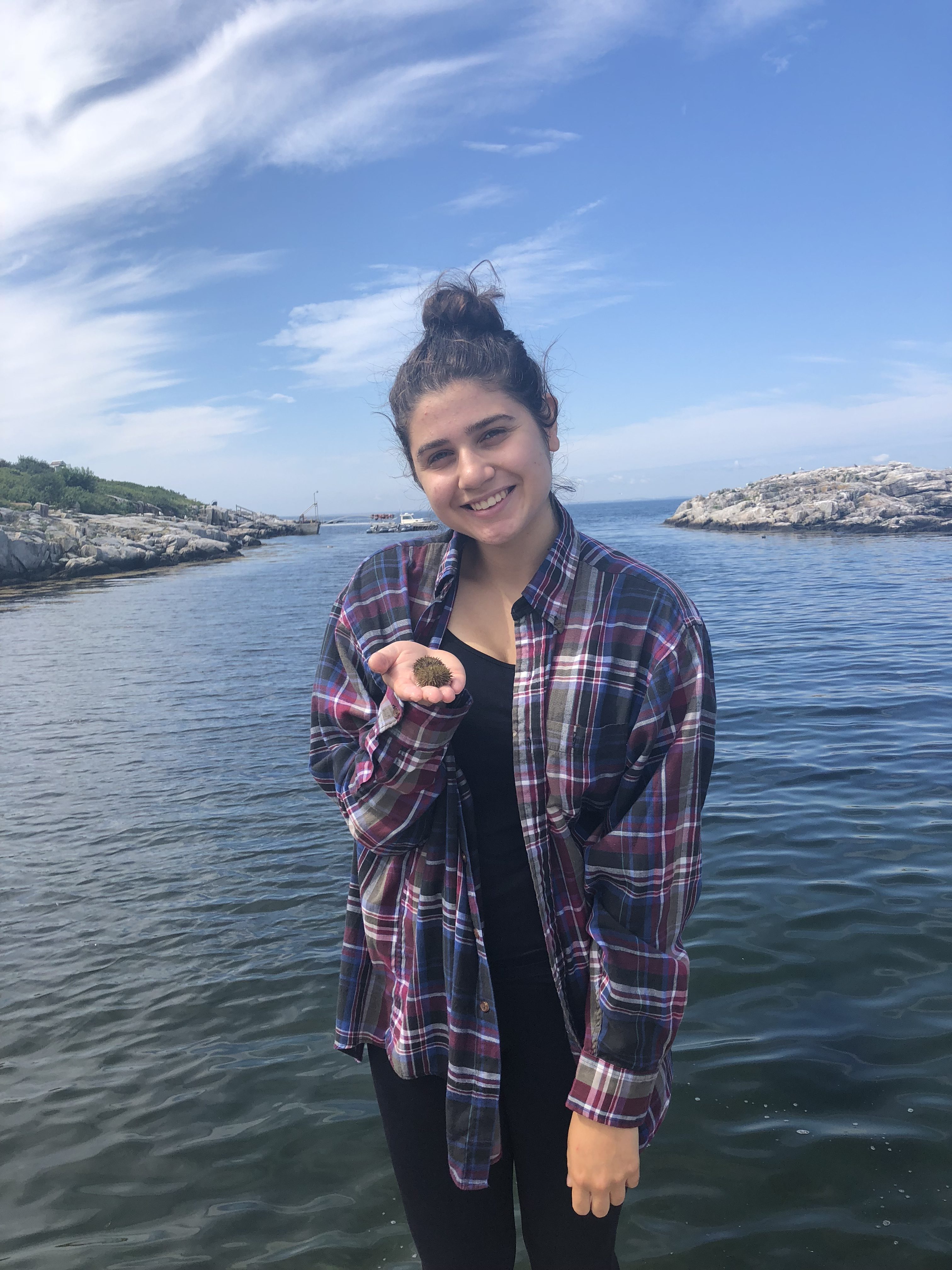 My sea urchins and I at Appledore island
My sea urchins and I at Appledore island

Free time on the island calls for some rock climbing!

My class and professors on our last day of the program
-if you are interested in my research with sea urchins at Shoals, check out my marine biology research blog!
TANZANIA
Currently at the airport and I just said my goodbyes to my family and friends, now I’m ready to take off!
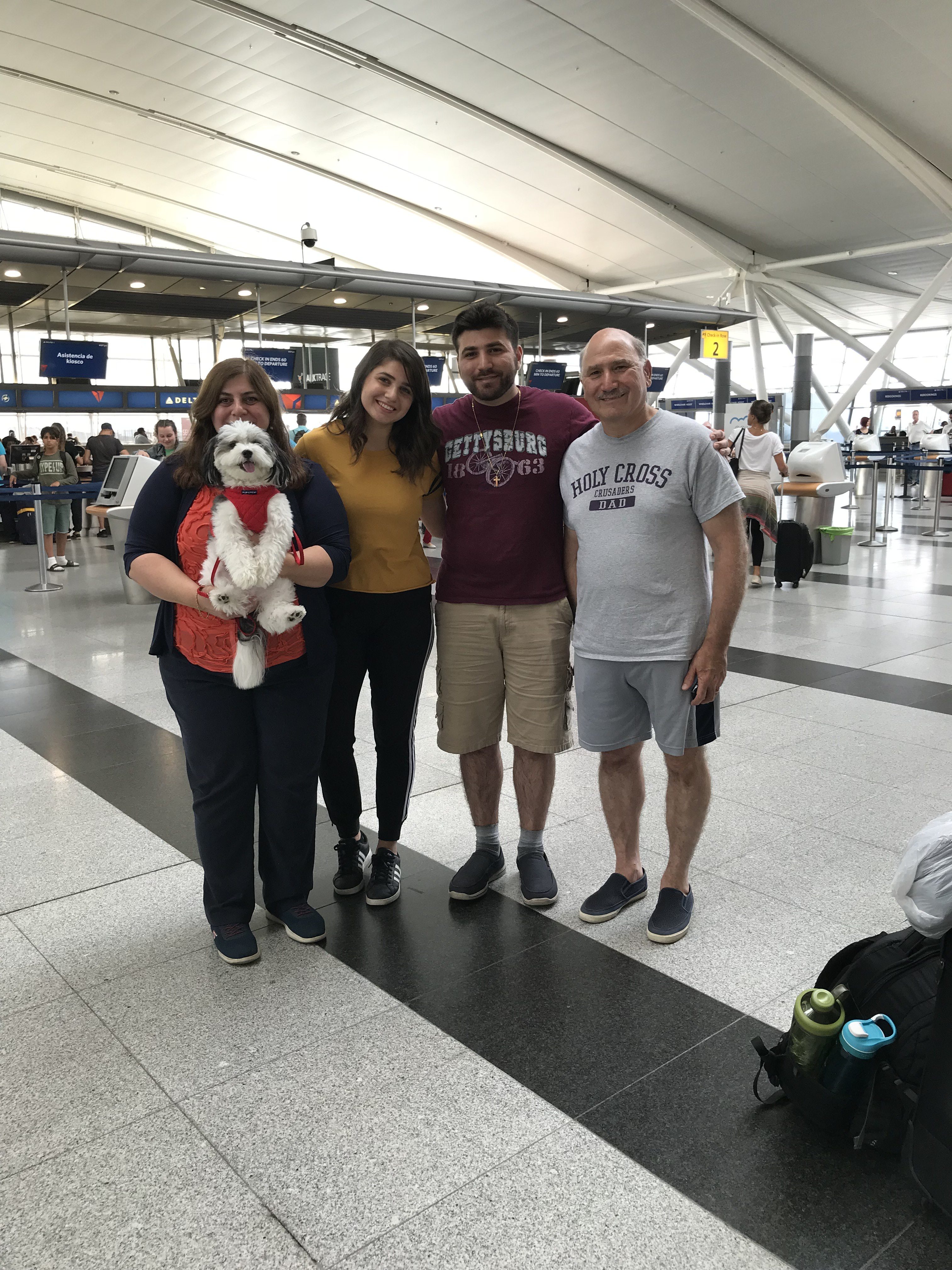
Bye fam!

Bye friends!
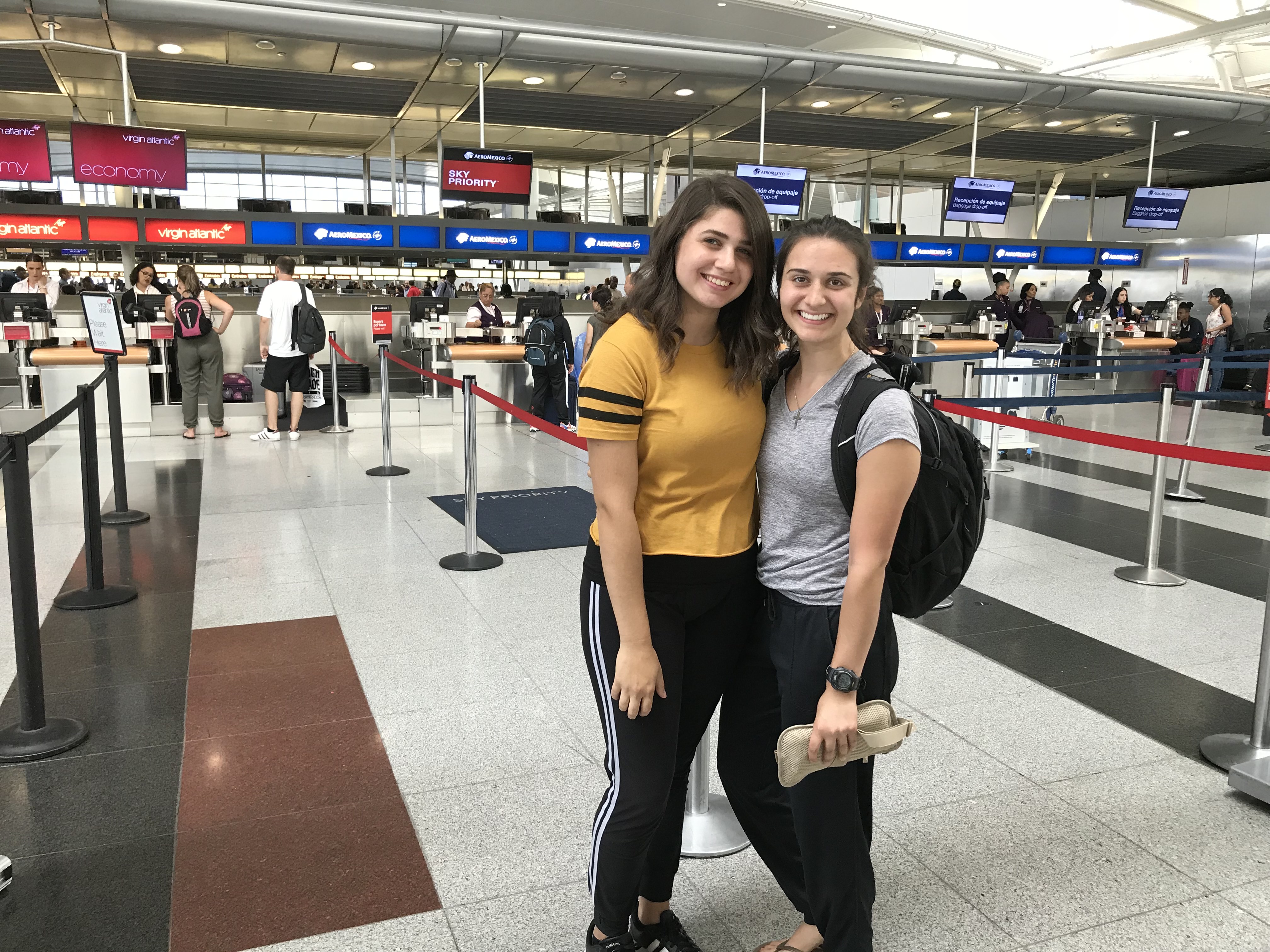
I’m happy to say that I’m not alone on this trip, I’ve got my HC buddy Hannah coming with!
I can’t wait to meet everyone from SFS!
 The Karatu market
The Karatu market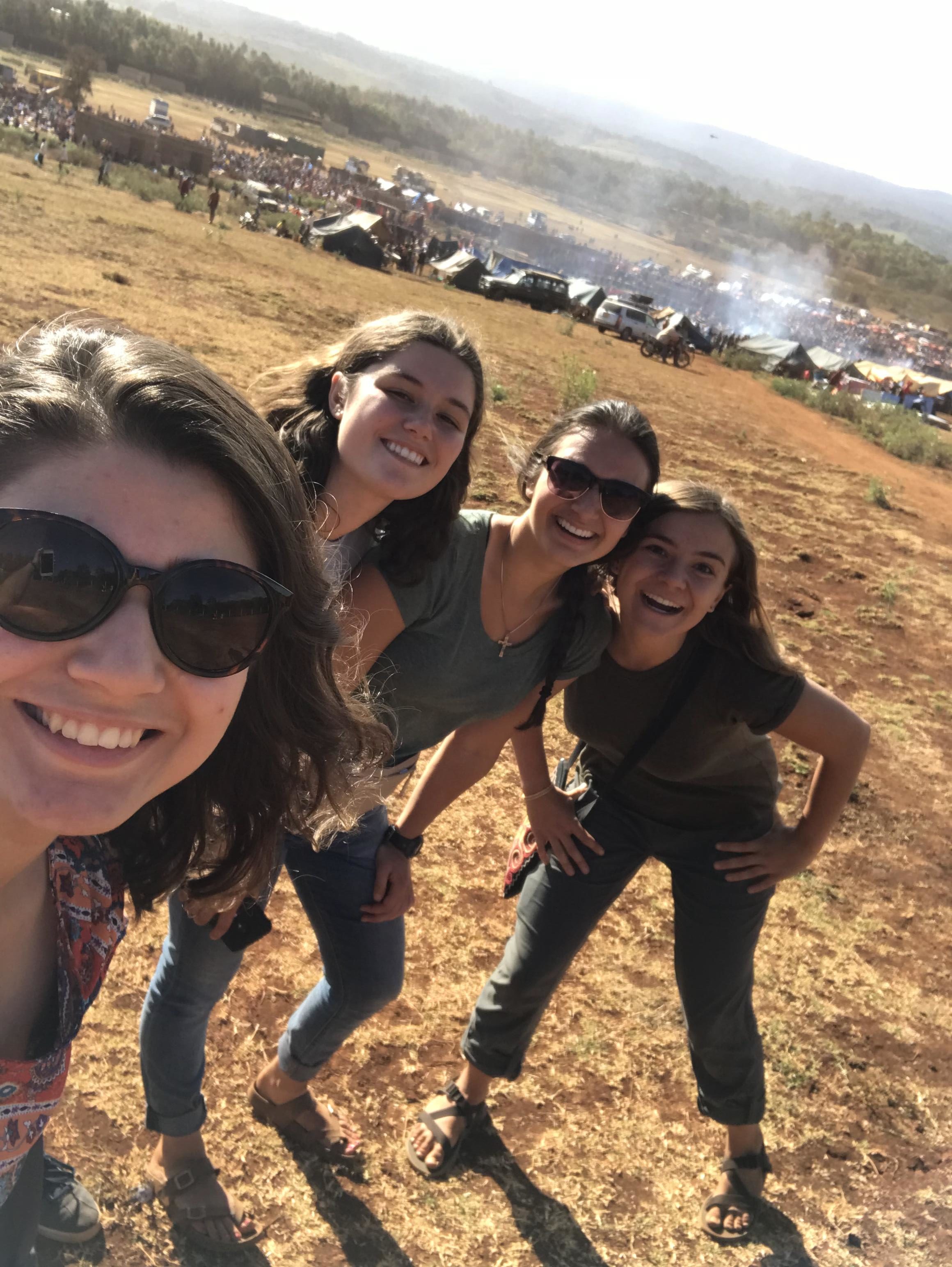 Being basic as can be with the girls
Being basic as can be with the girls  Mousa here helped us with Swahili and finding these sugarcane!
Mousa here helped us with Swahili and finding these sugarcane!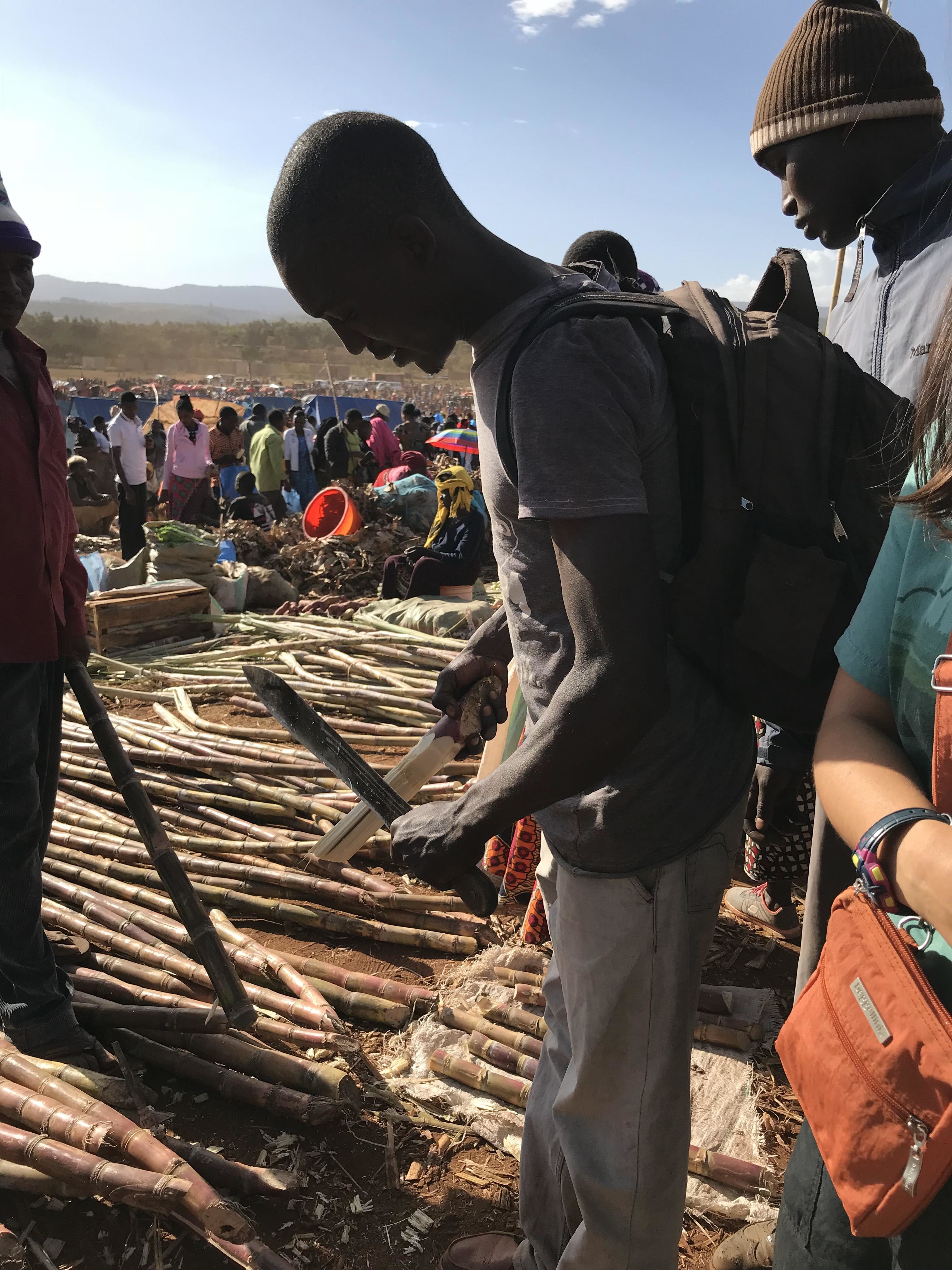 Cutting down some sugarcane; they’re basically wooden ice cream
Cutting down some sugarcane; they’re basically wooden ice cream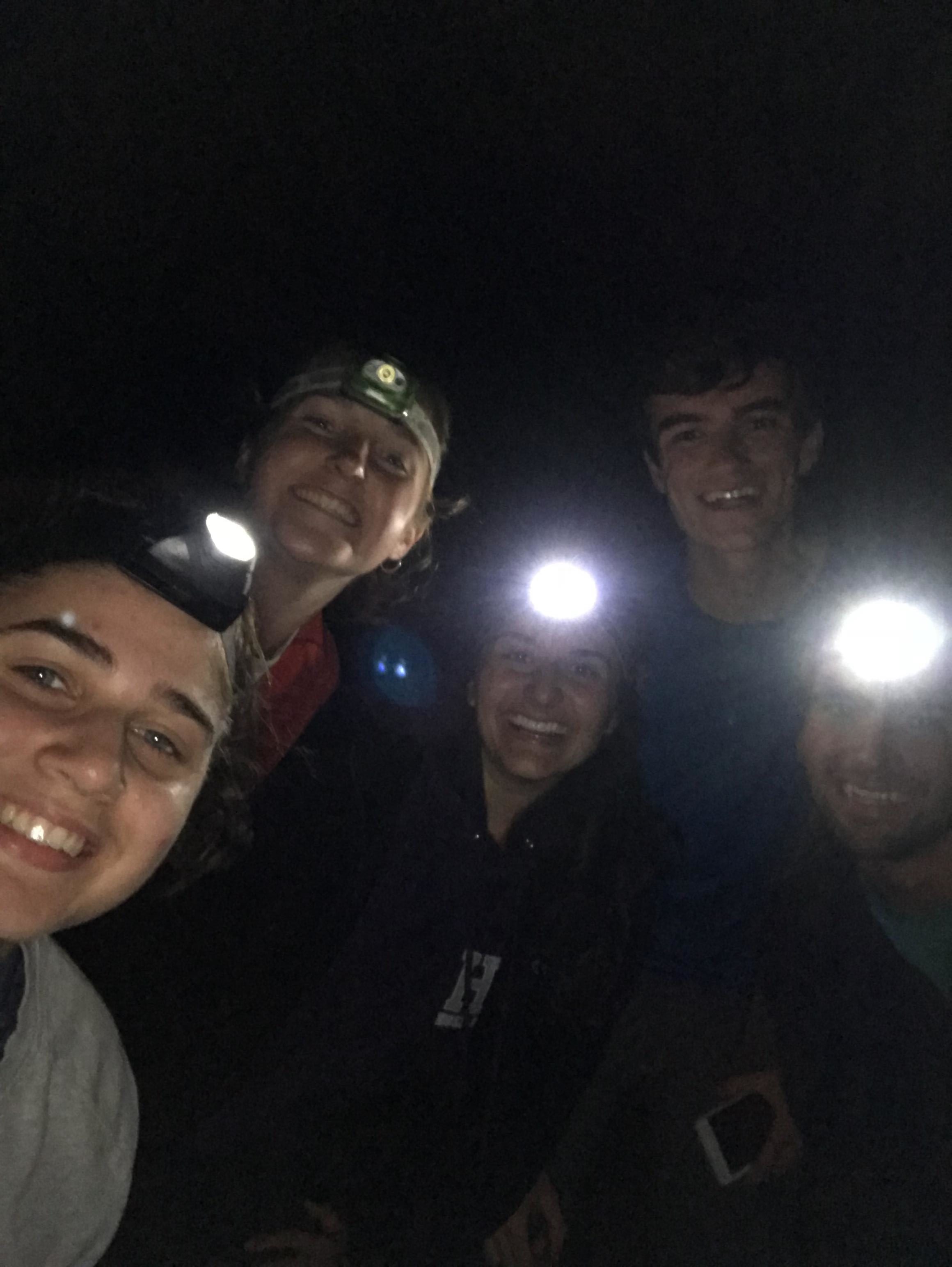 Stargazing + headlamps = : D
Stargazing + headlamps = : D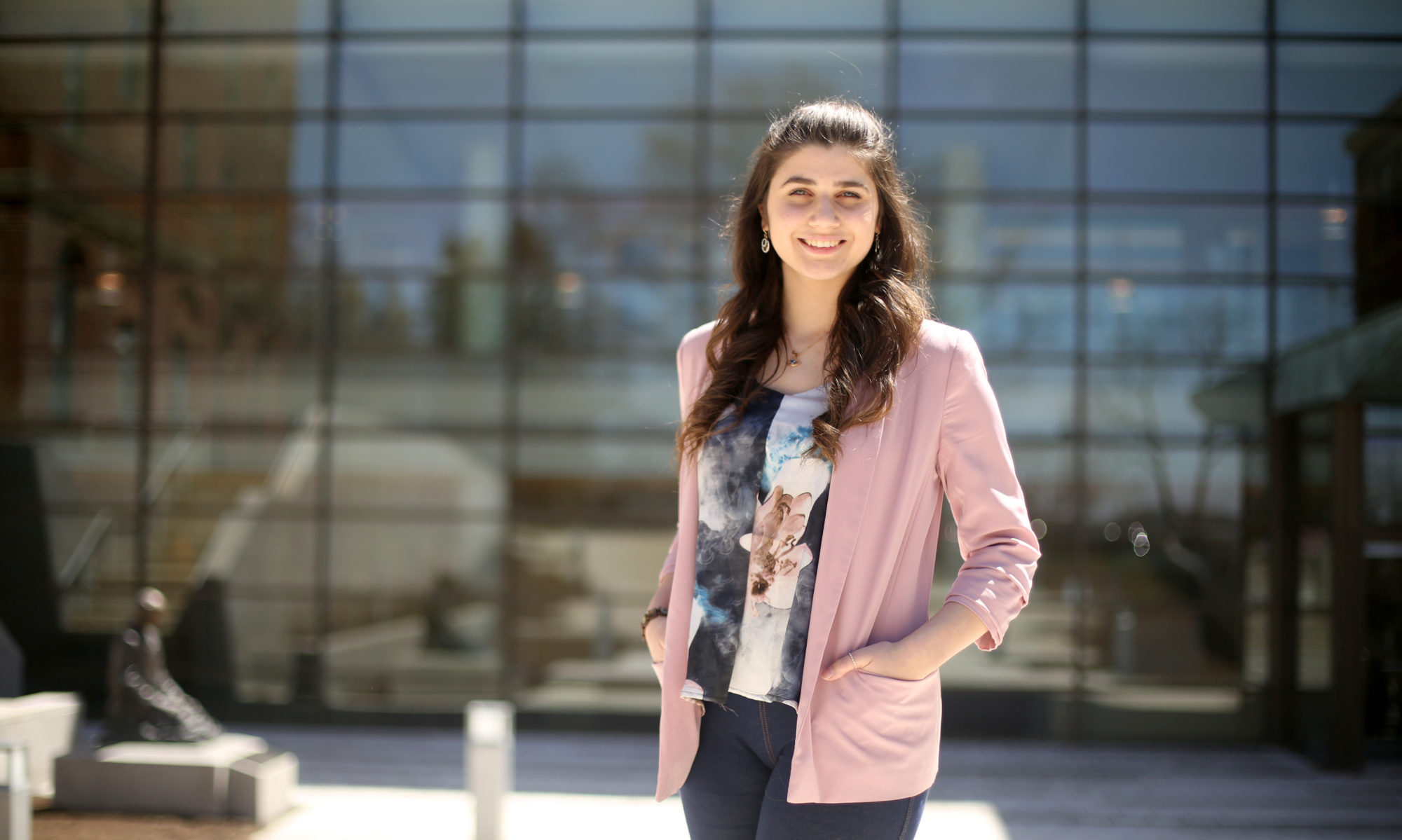
 It’s our first time doing a safari
It’s our first time doing a safari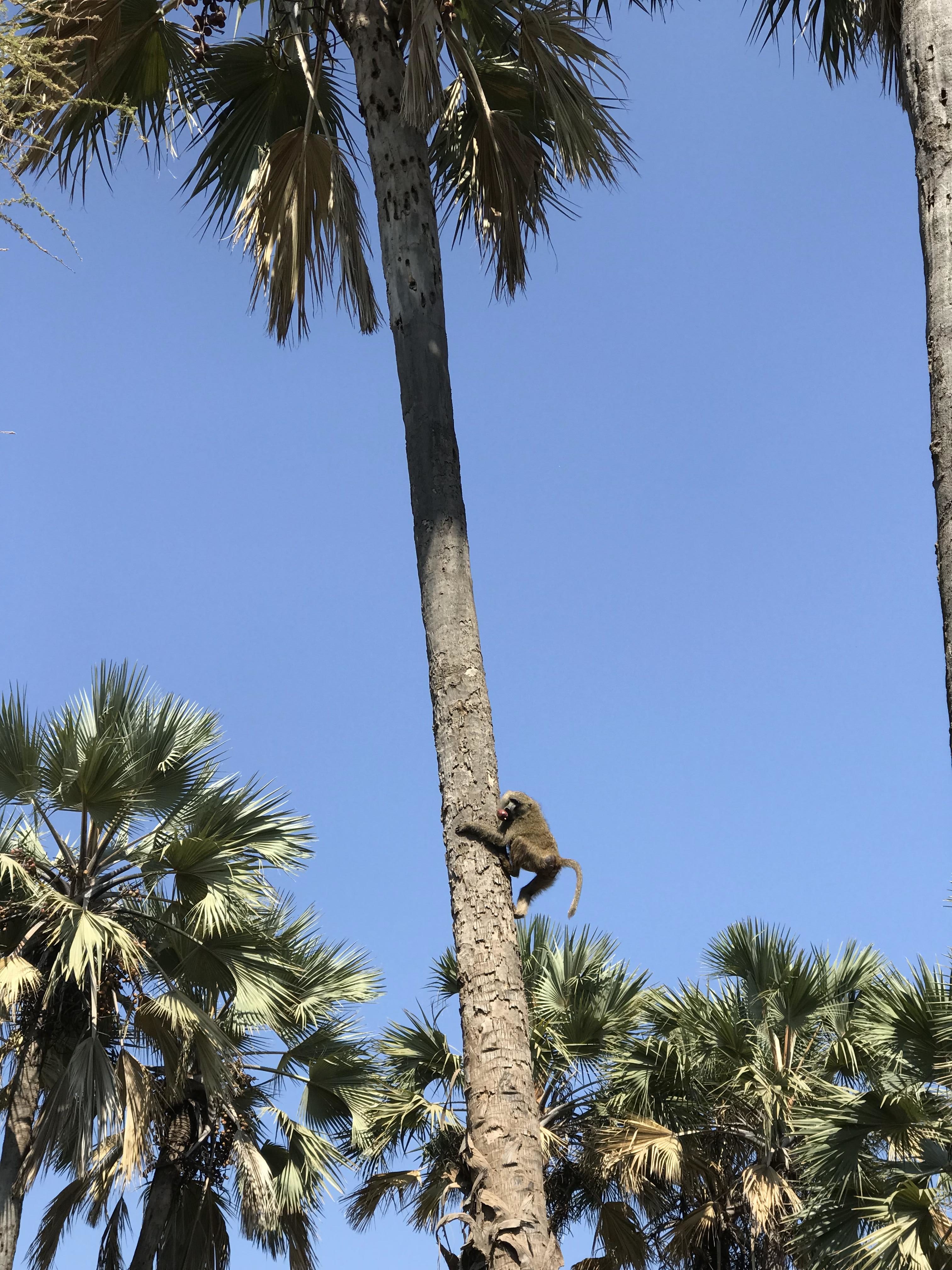 Olive baboon posing for the picture and eating palm tree nut
Olive baboon posing for the picture and eating palm tree nut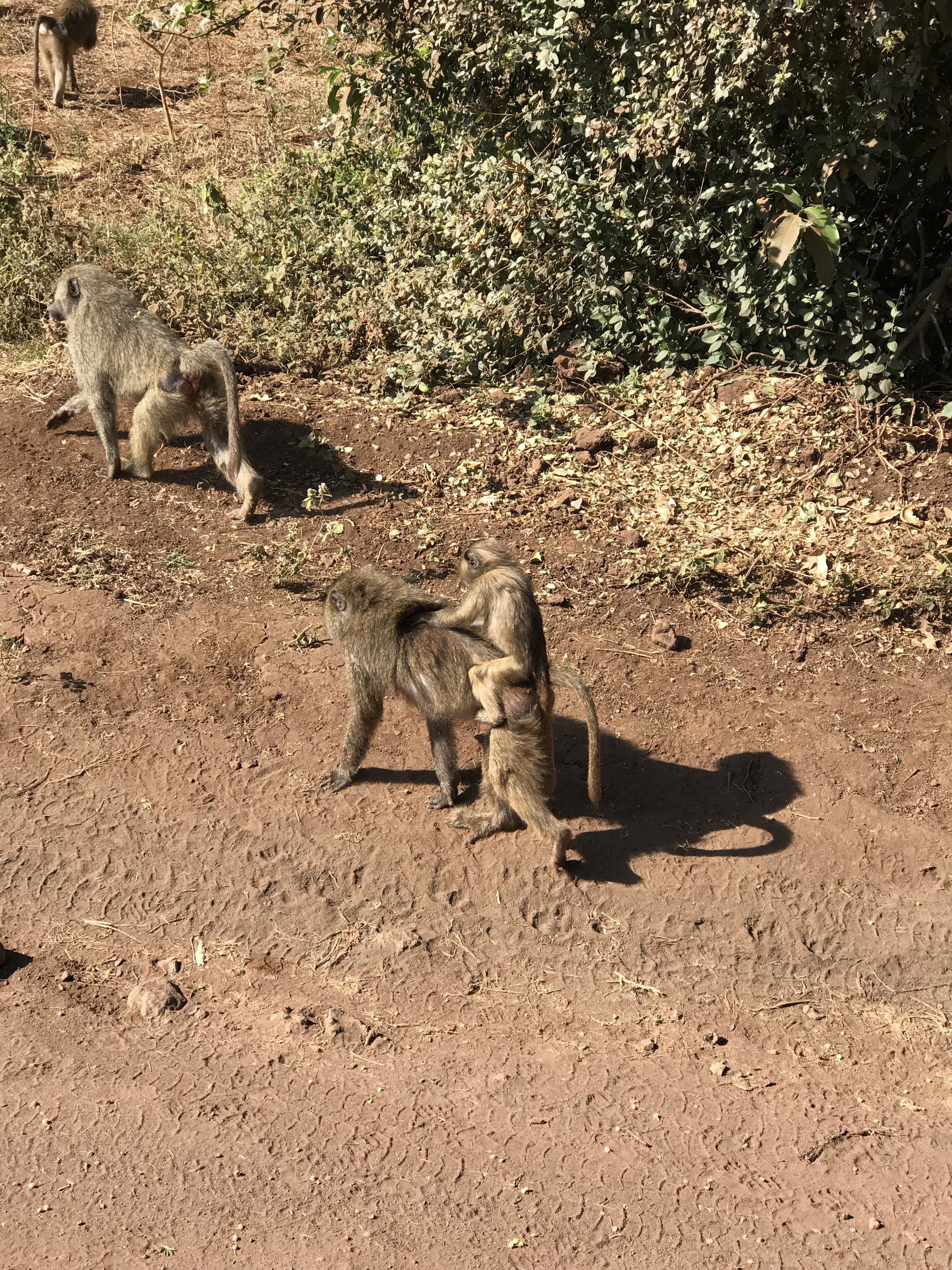 Mama and her baby on a mission to find food
Mama and her baby on a mission to find food Baboons right above our safari… a little scary but super cool!
Baboons right above our safari… a little scary but super cool!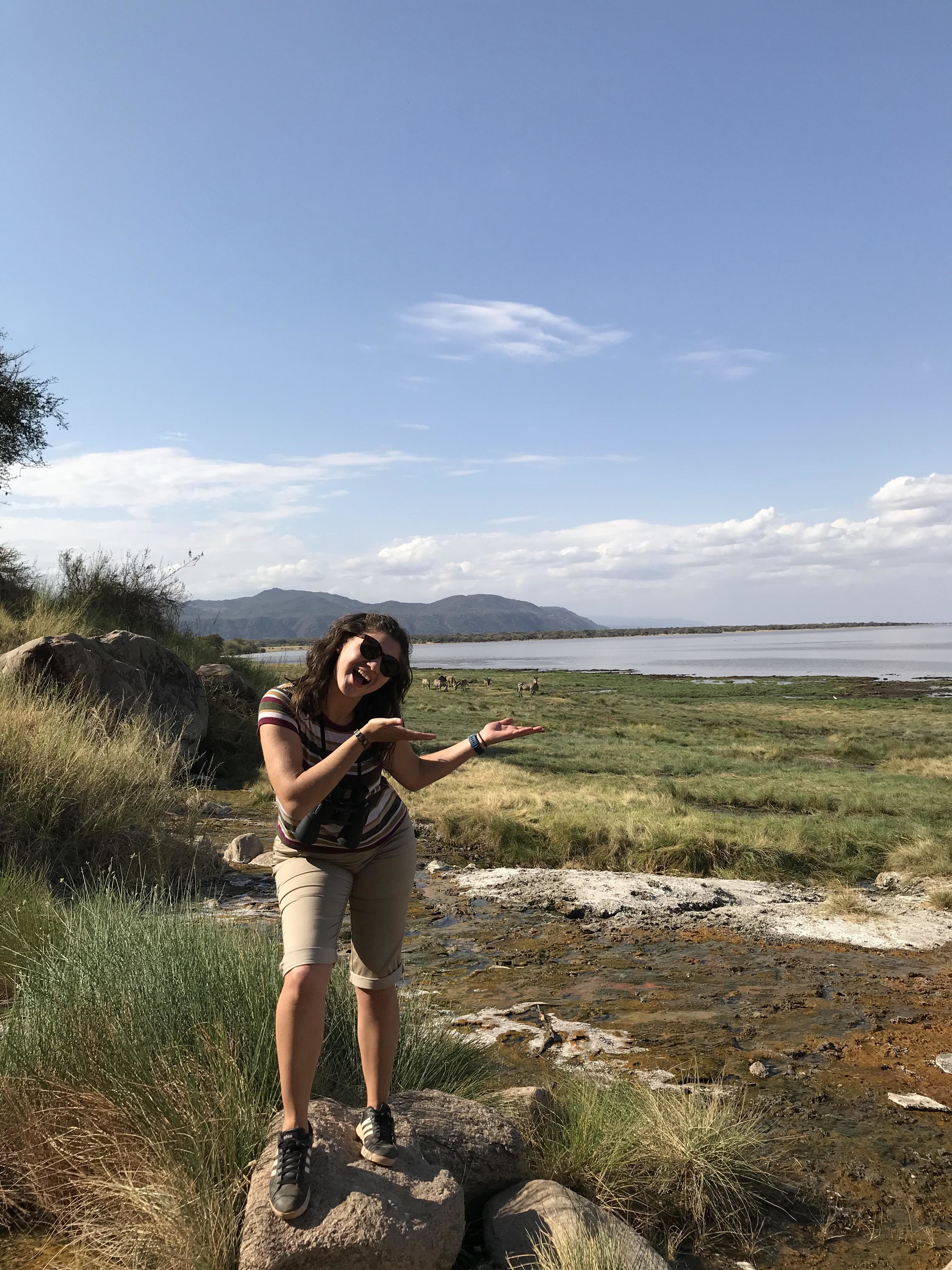 Zebras and wildebeests running behind me
Zebras and wildebeests running behind me  Pictures do not do zebras justice, their beauty is so detailed and hard to explain!
Pictures do not do zebras justice, their beauty is so detailed and hard to explain!  The zebra family showed up… the baby is so cute!
The zebra family showed up… the baby is so cute! 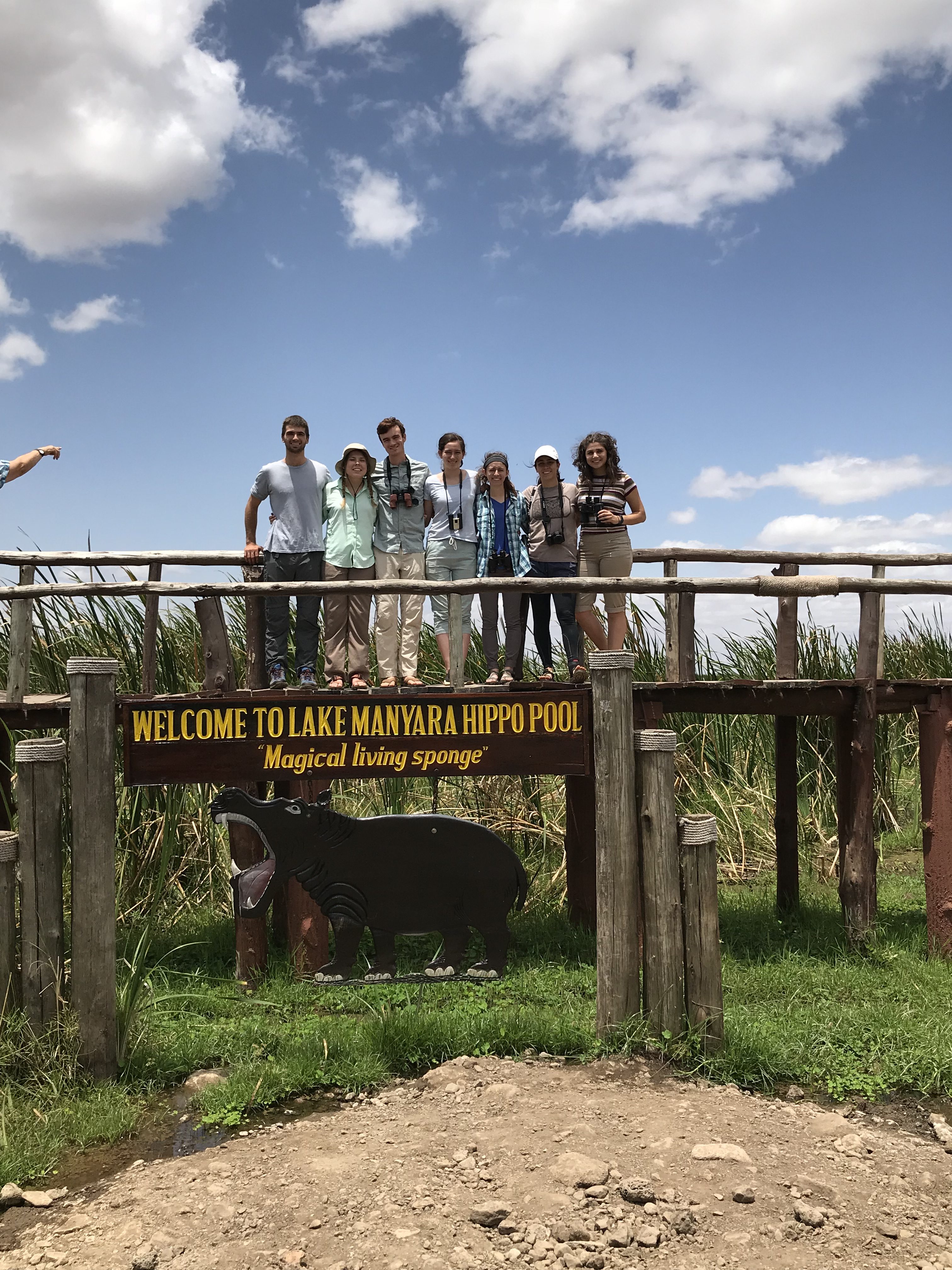 Spending 12 hours in the safari with these lovely people made my experience even better!
Spending 12 hours in the safari with these lovely people made my experience even better! Hippos! Lazy as can be : )
Hippos! Lazy as can be : )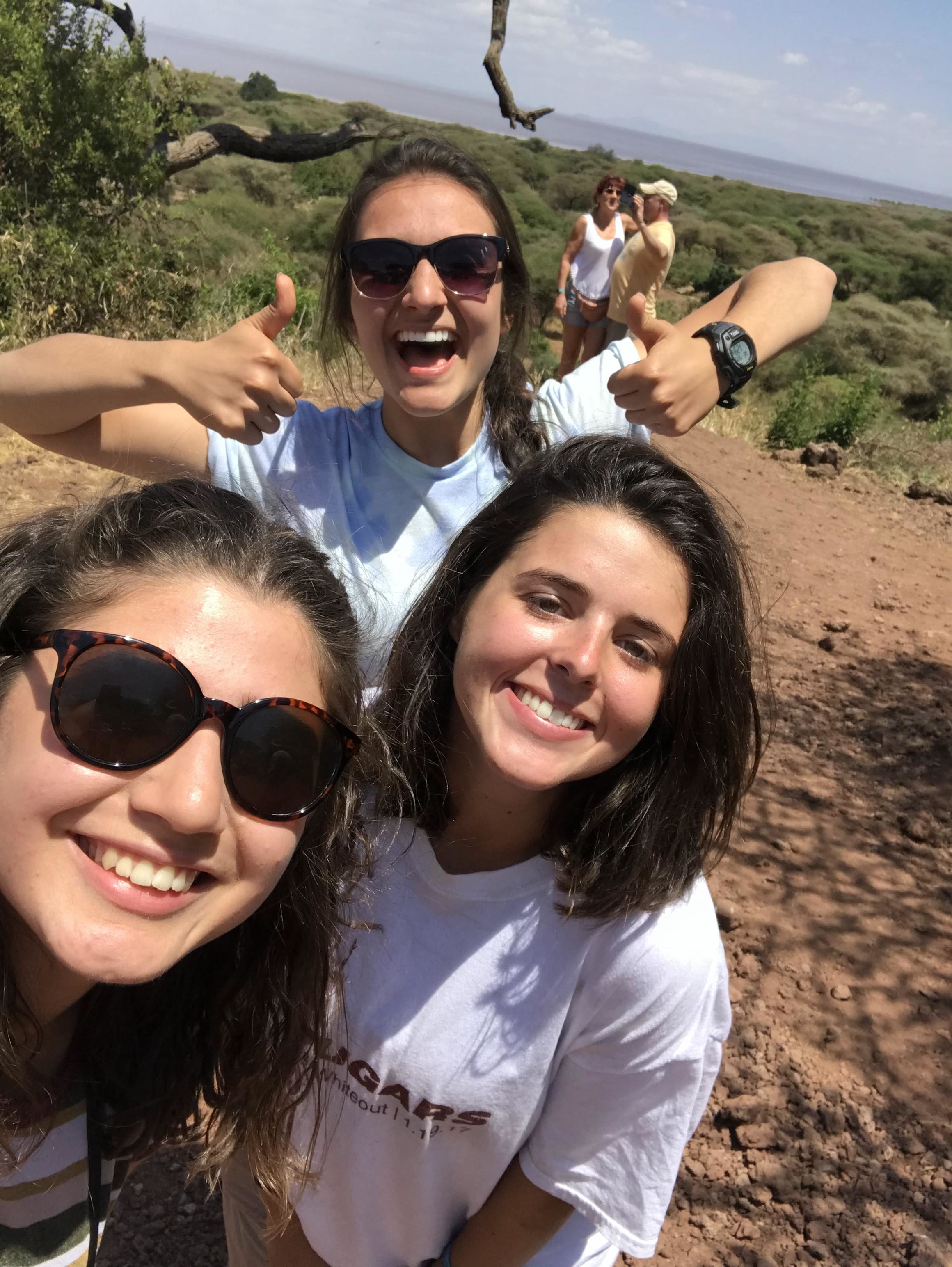 Enjoying the beautiful views with these ladies at our mini break at the park
Enjoying the beautiful views with these ladies at our mini break at the park Vervet monkeys chilling by the trees
Vervet monkeys chilling by the trees Grant’s gazelle
Grant’s gazelle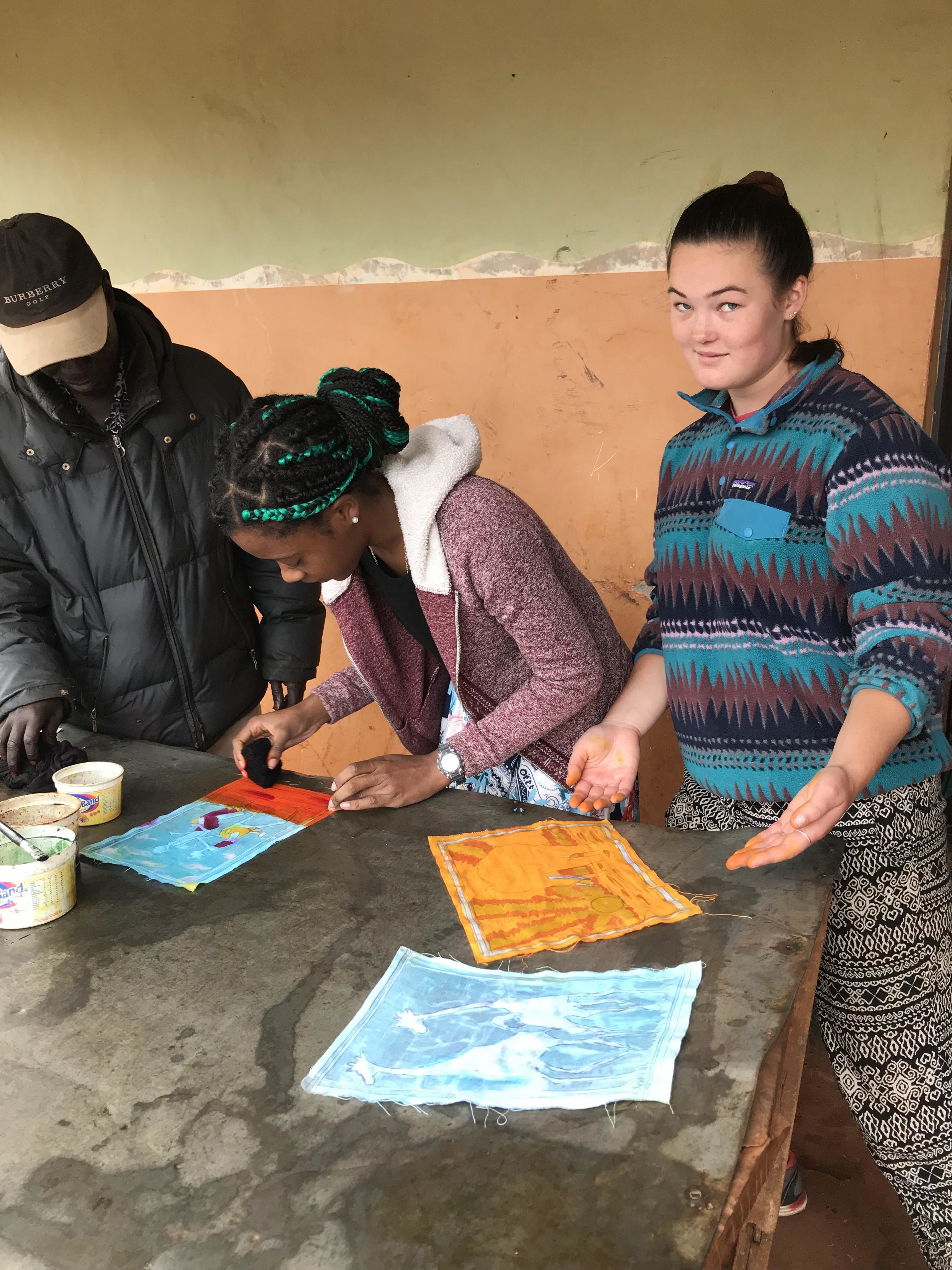 Fransha and Elaine are already skilled wax painters
Fransha and Elaine are already skilled wax painters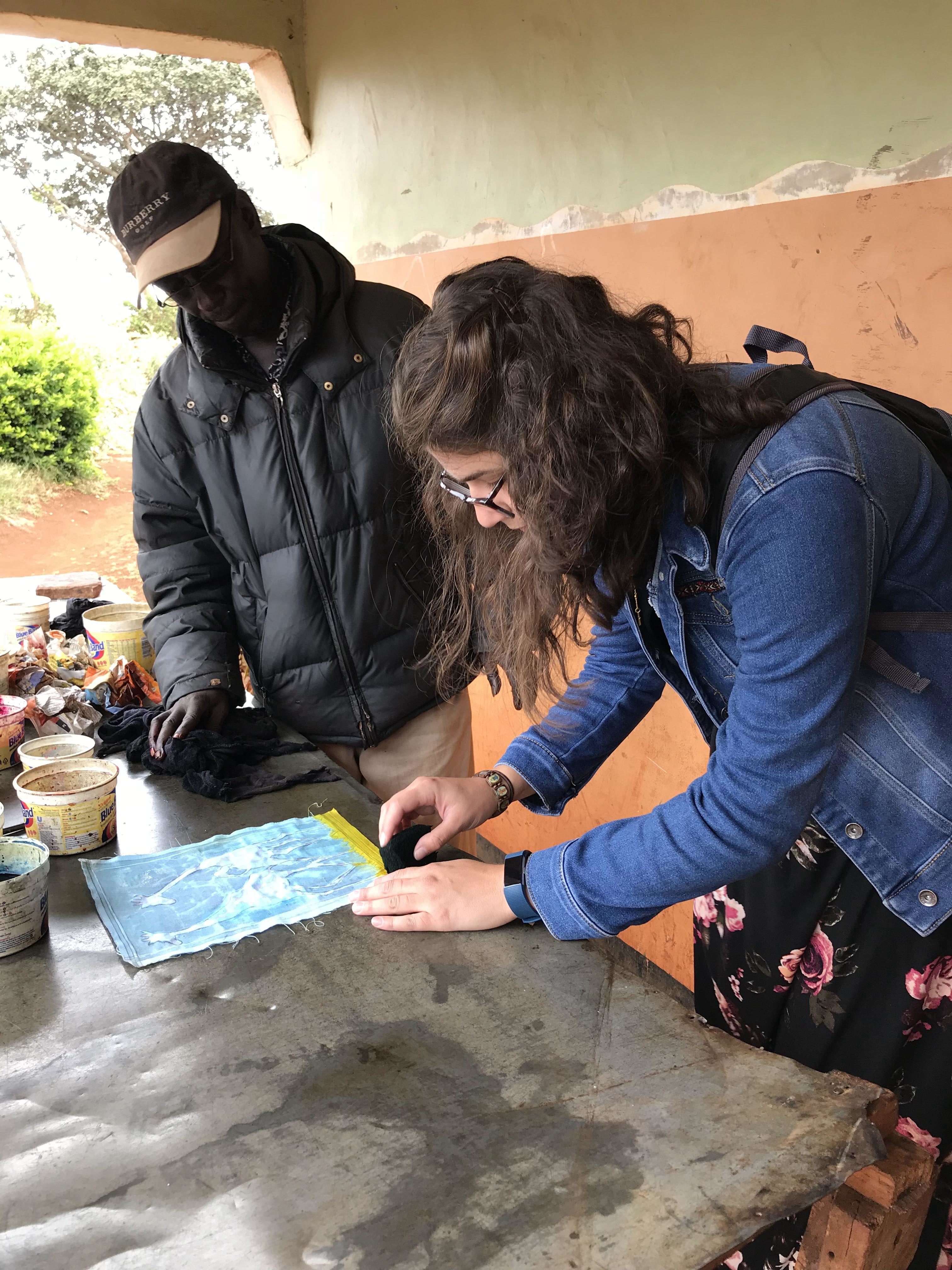 Me trying to not mess up infront of Ali
Me trying to not mess up infront of Ali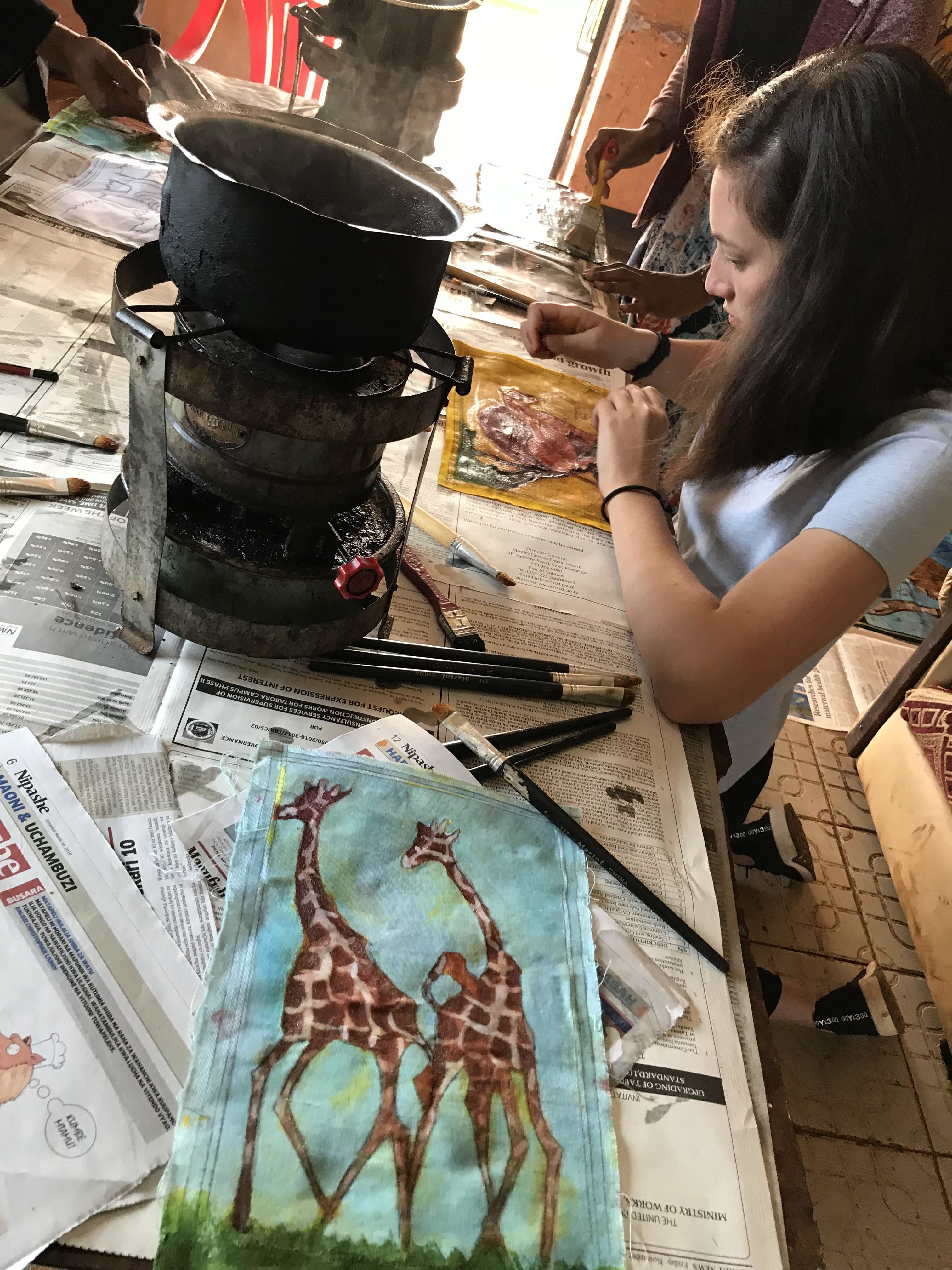 Sarah and I working hard to get the waxing technique down
Sarah and I working hard to get the waxing technique down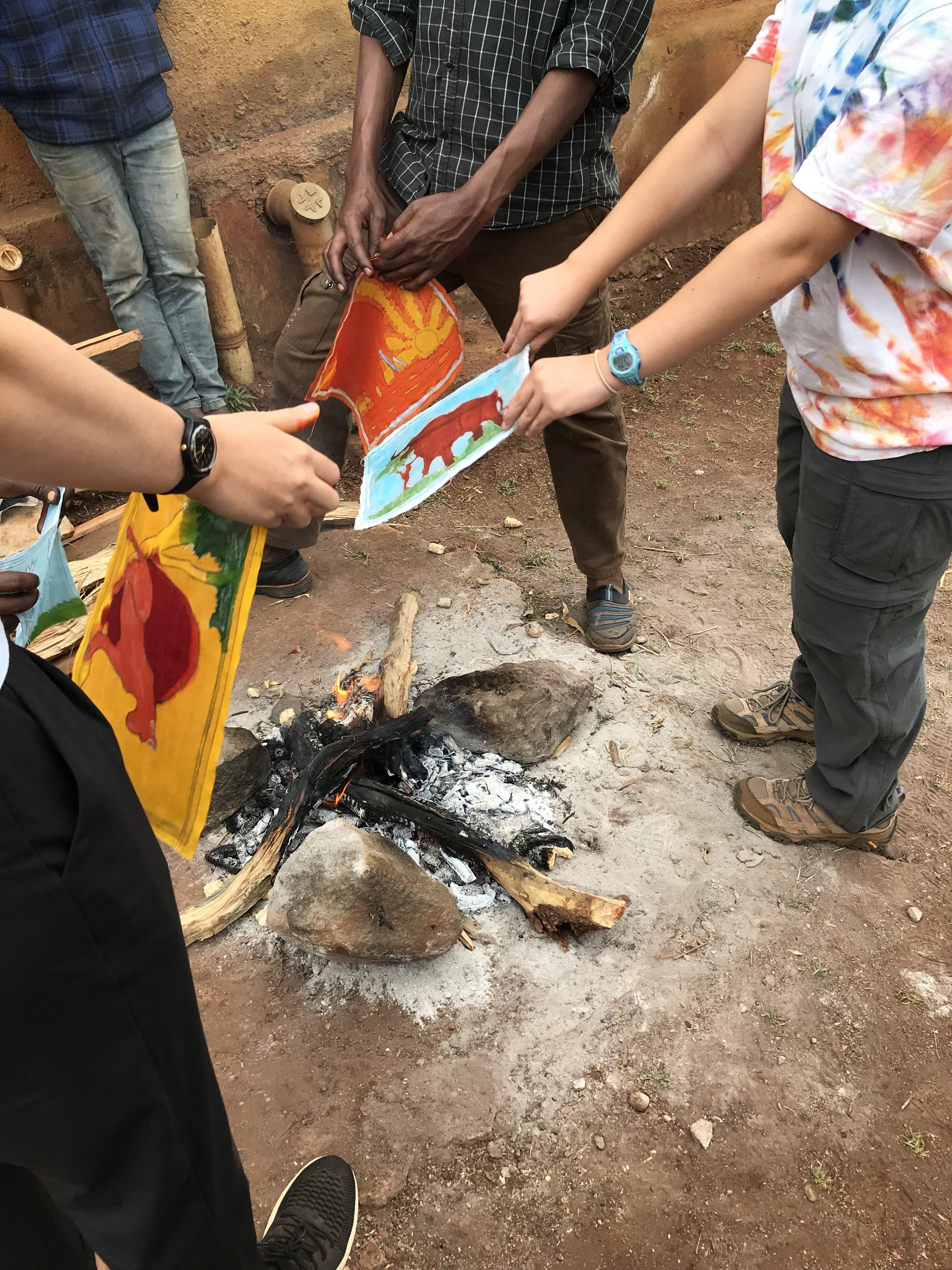 The whole crew drying their wax paintings at the fire pit
The whole crew drying their wax paintings at the fire pit 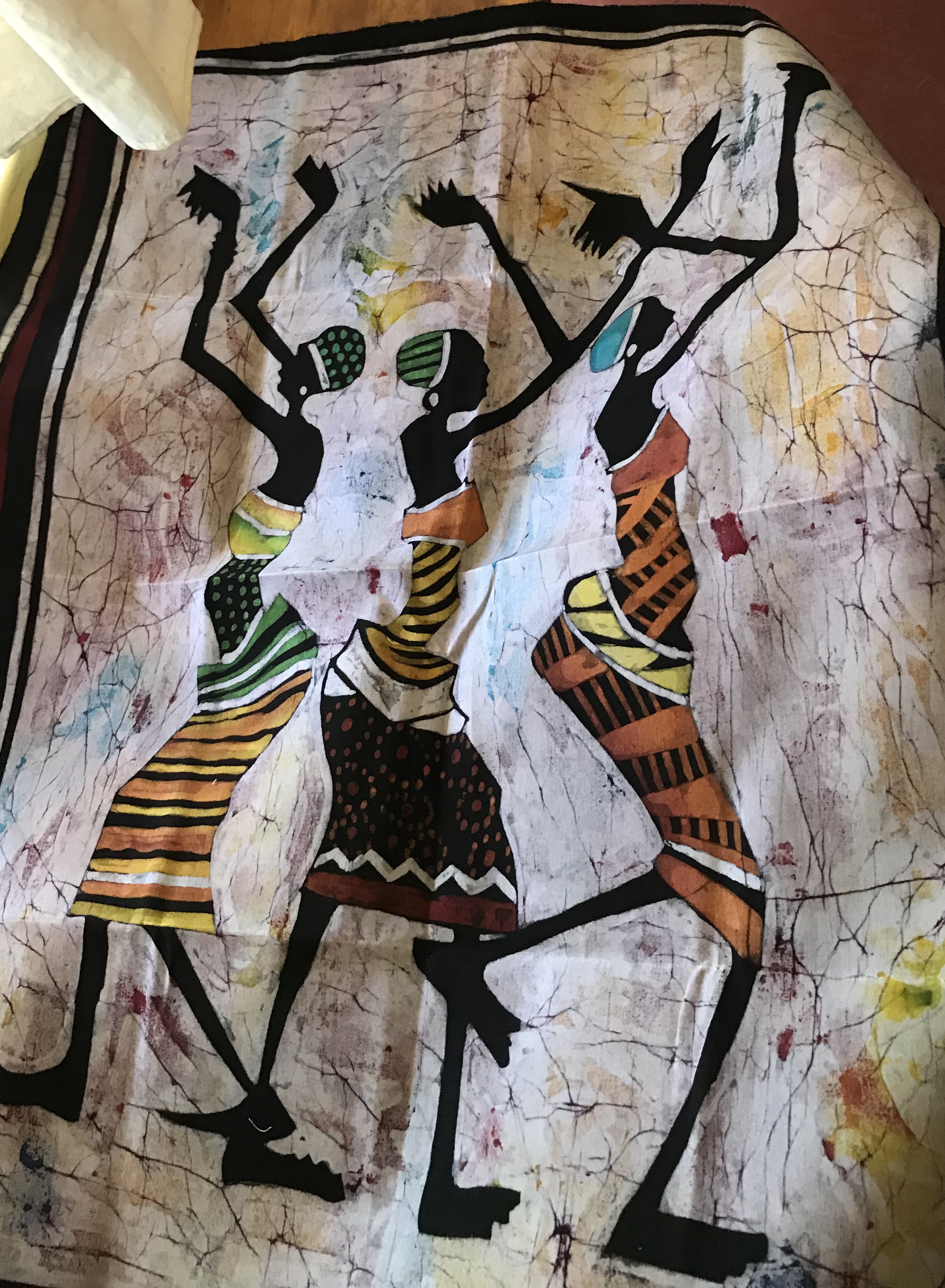 Professional painting of three women dancing
Professional painting of three women dancing A beautiful painting of people heading home from the market
A beautiful painting of people heading home from the market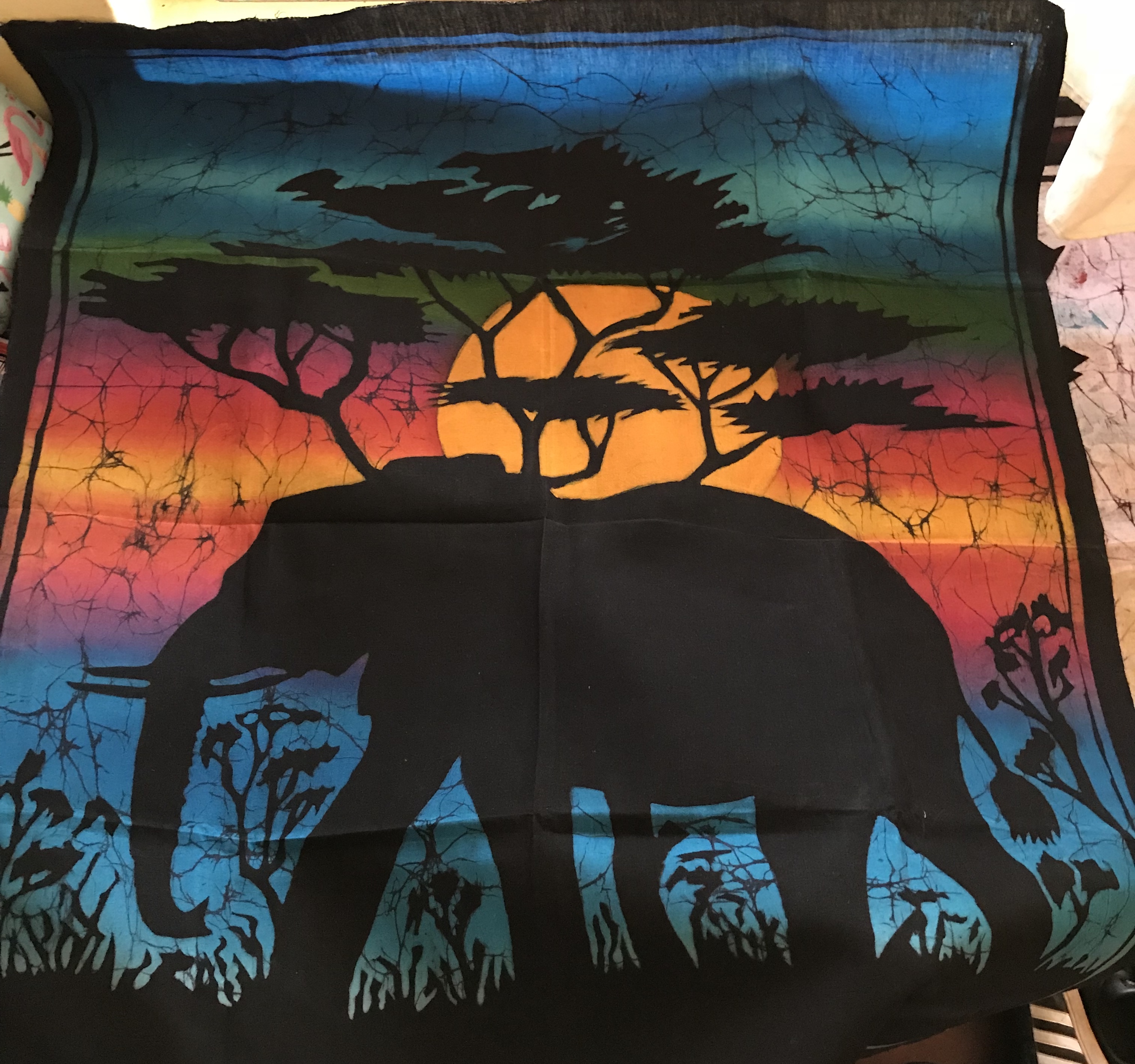 Just one of many wildlife paintings at that house
Just one of many wildlife paintings at that house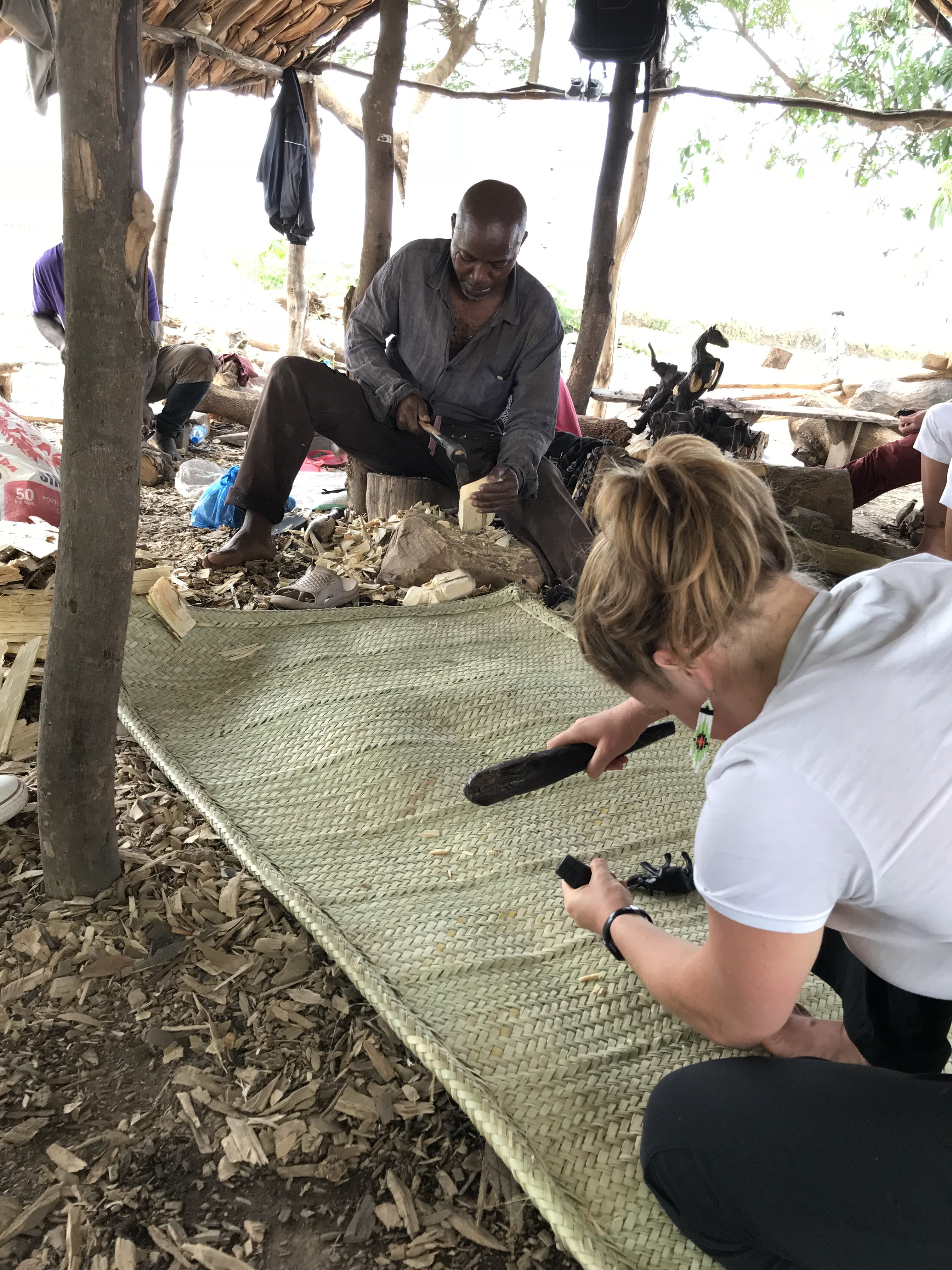 Working hard at the wood carving place
Working hard at the wood carving place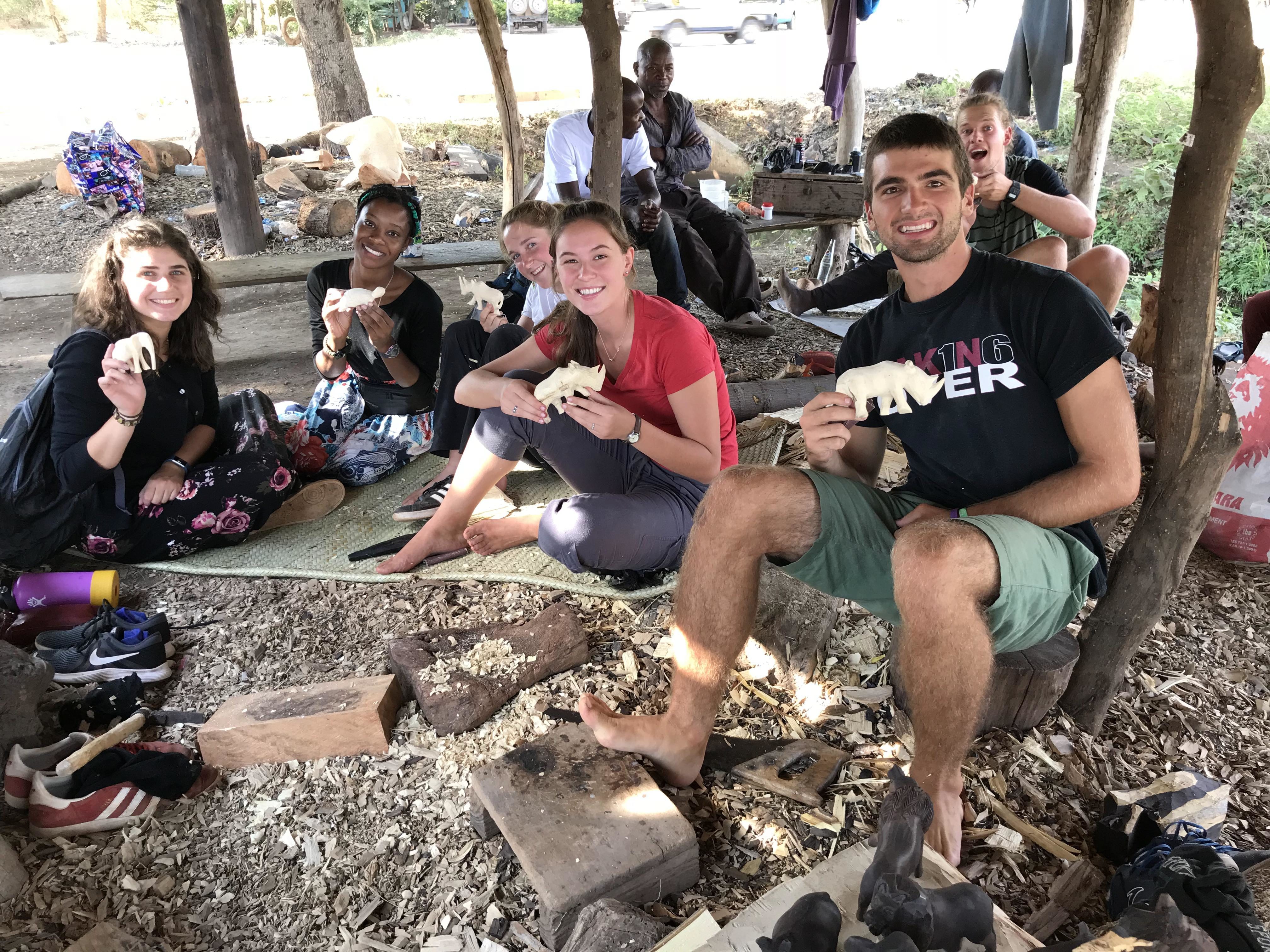 We were all successful in making our wooden animals with a little help by the professionals!
We were all successful in making our wooden animals with a little help by the professionals! 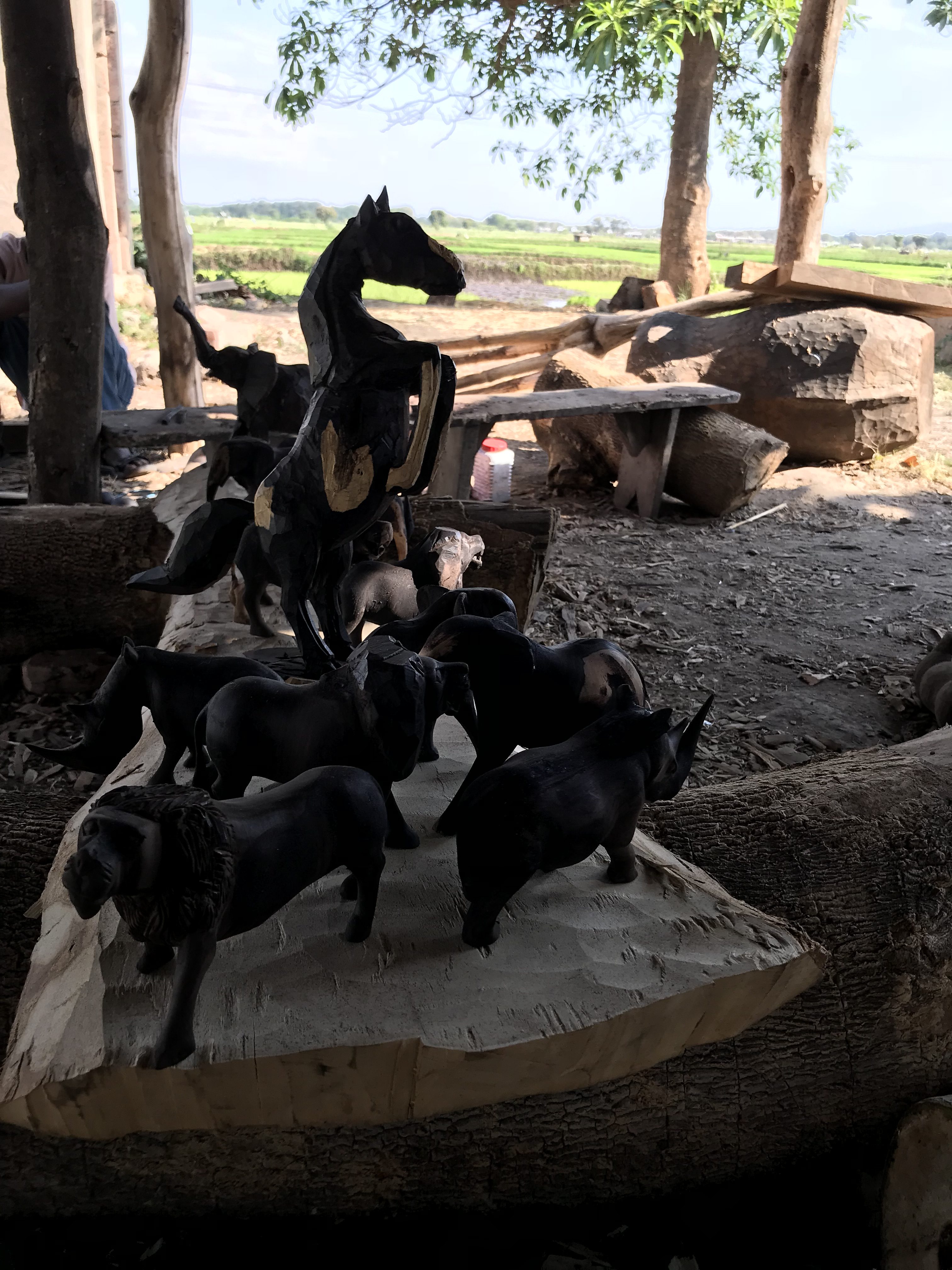 They used mango trees that were licensed to be cut down and carved to make these beautiful animals and other statues
They used mango trees that were licensed to be cut down and carved to make these beautiful animals and other statues  My classroom : )
My classroom : ) My classmates and I paying attention to our guest speaker
My classmates and I paying attention to our guest speaker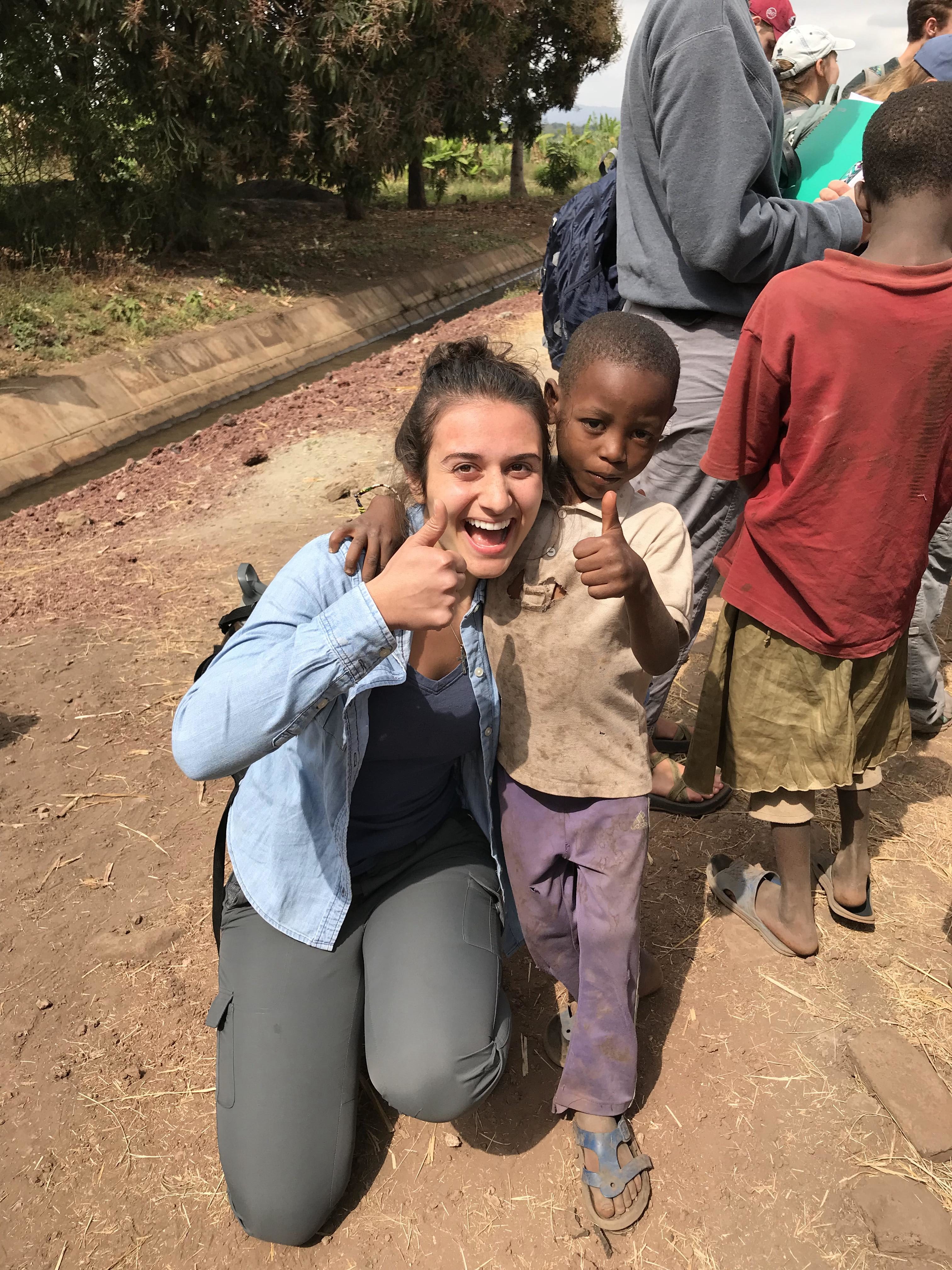 So many little kids saying hi to us and joining us on our walks!
So many little kids saying hi to us and joining us on our walks!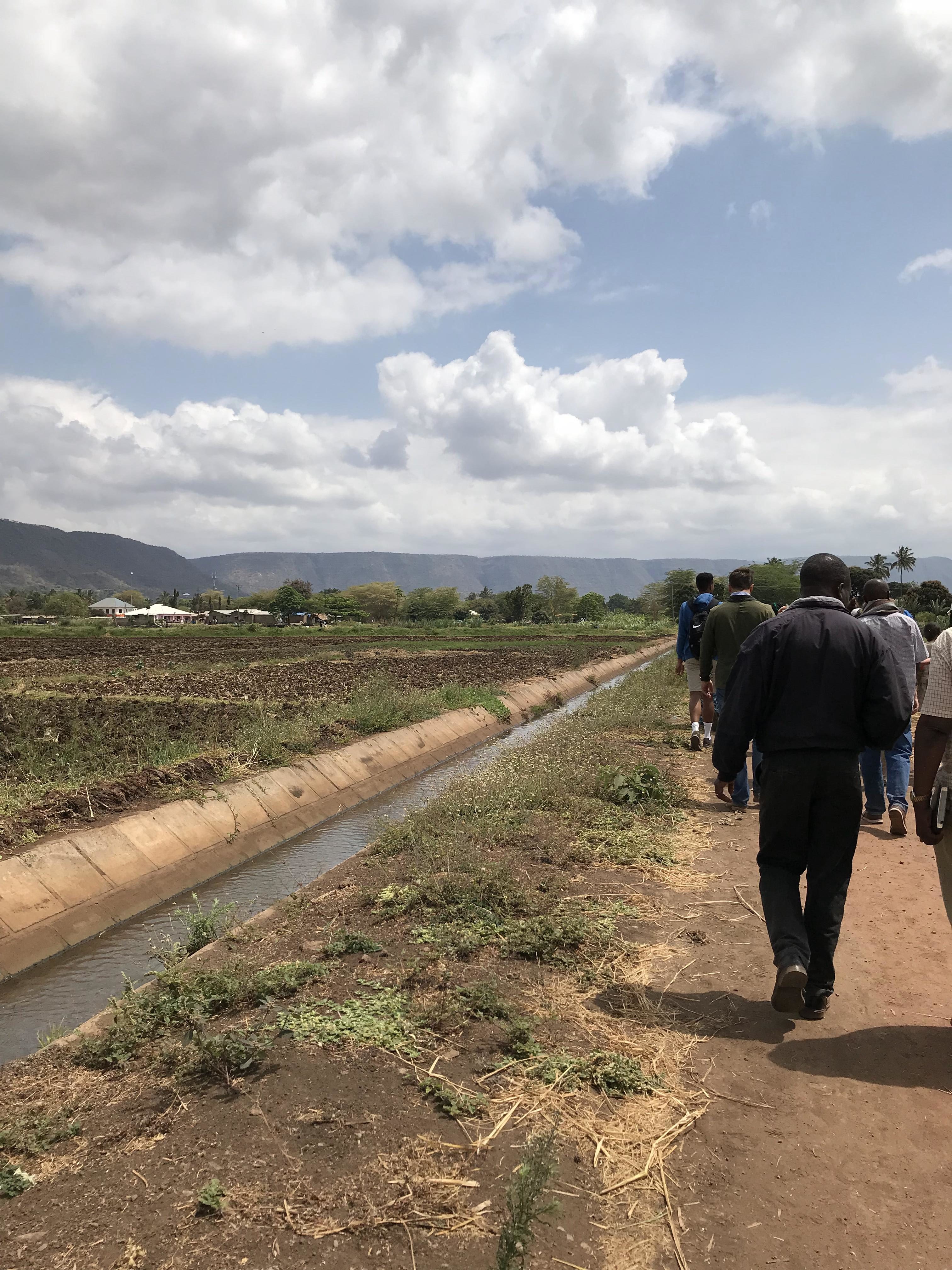 It was very interesting to learn about how much these people know and how much work is needed to manage human wildlife conflicts
It was very interesting to learn about how much these people know and how much work is needed to manage human wildlife conflicts We all landed safe and sound in Tanzania!
We all landed safe and sound in Tanzania! Hannah welcoming you all to our campus
Hannah welcoming you all to our campus  Rega and Carla posing at the top of our campus gazebo
Rega and Carla posing at the top of our campus gazebo 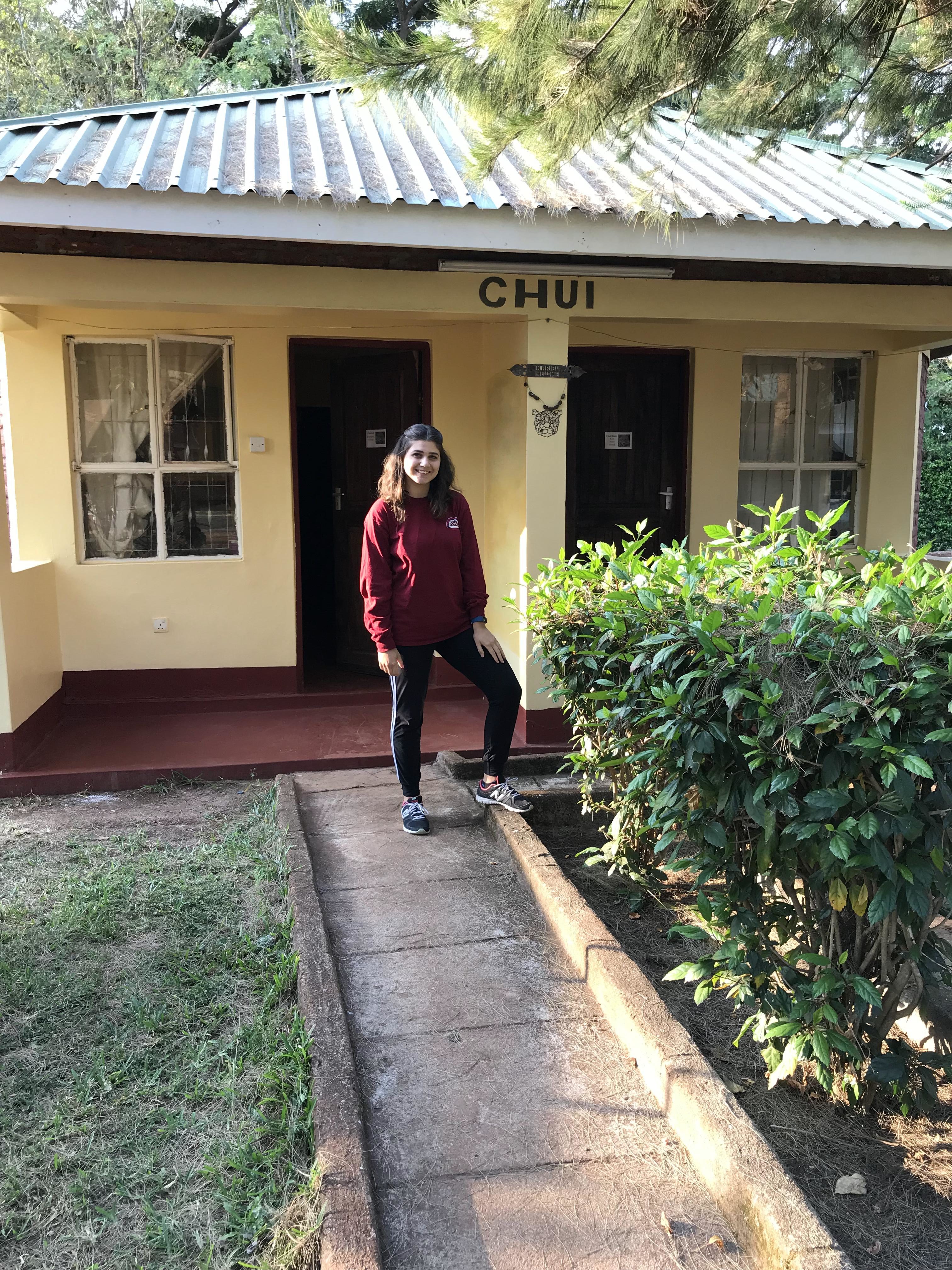 My new home: Chui
My new home: Chui  Bonfire night!
Bonfire night! Getting ready to play soccer with the locals
Getting ready to play soccer with the locals 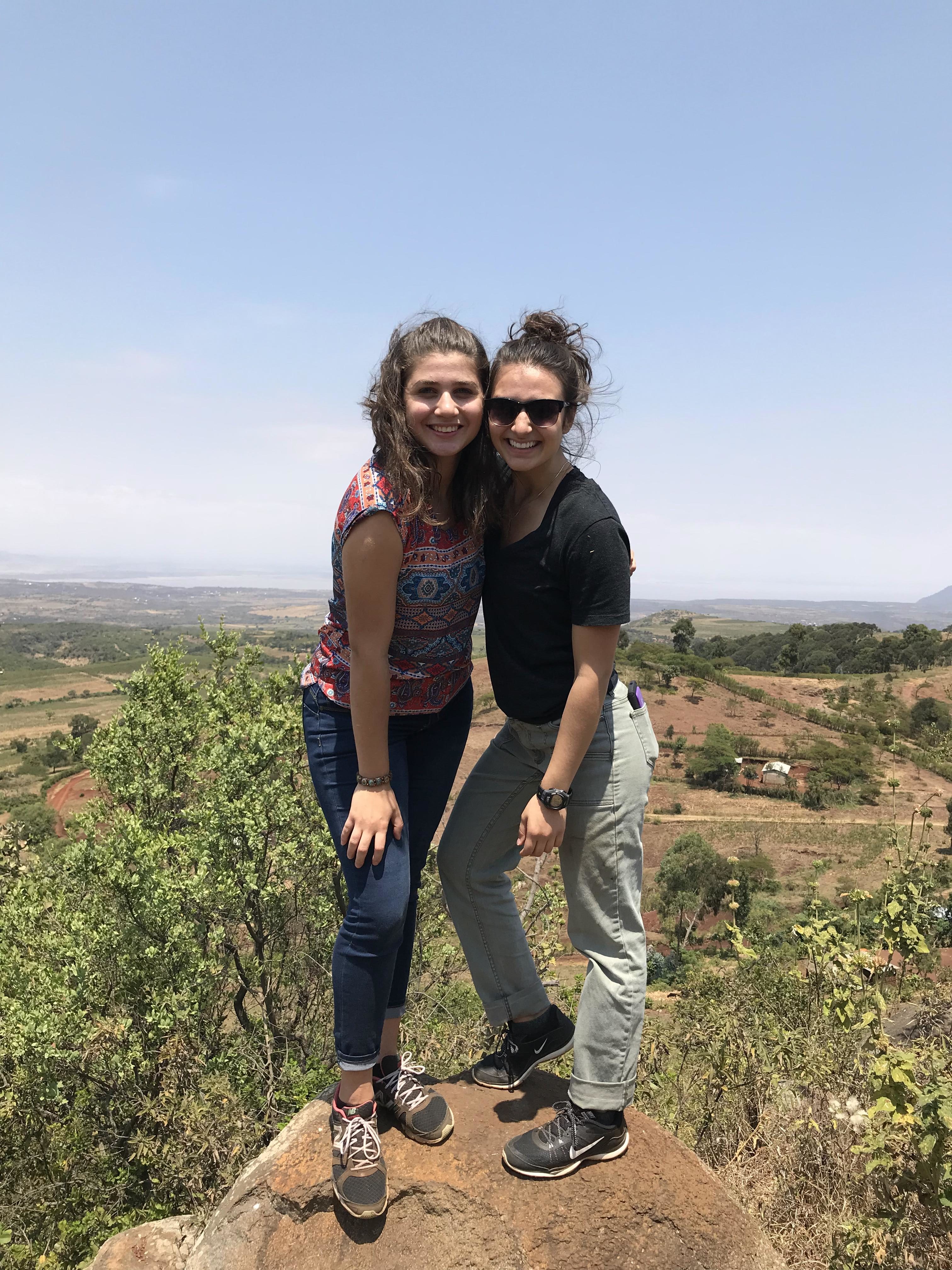 Just a 20 min hike from our campus to see these beautiful views
Just a 20 min hike from our campus to see these beautiful views 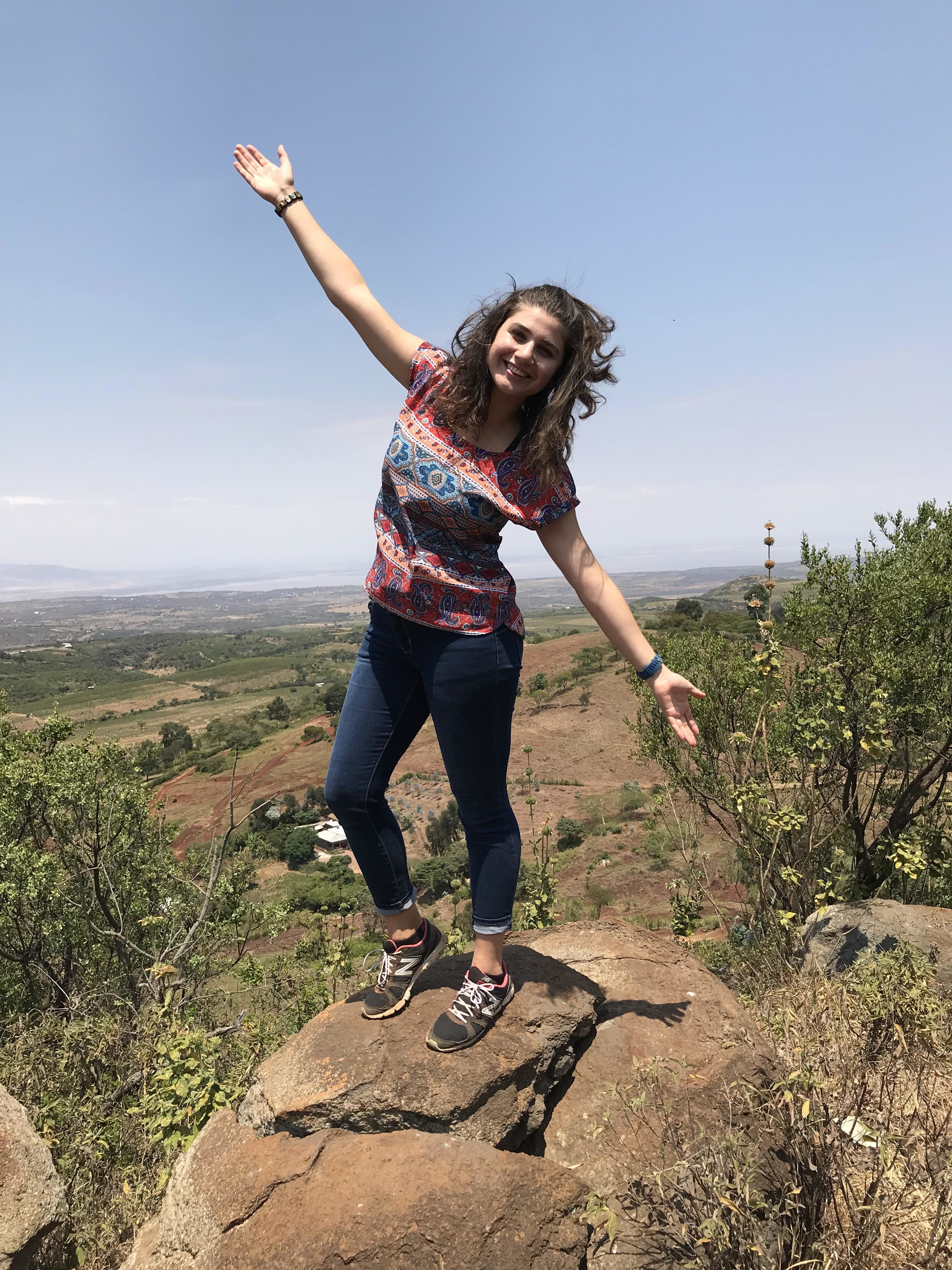 Still cannot believe I’m here…
Still cannot believe I’m here…


 My sea urchins and I at Appledore island
My sea urchins and I at Appledore island



